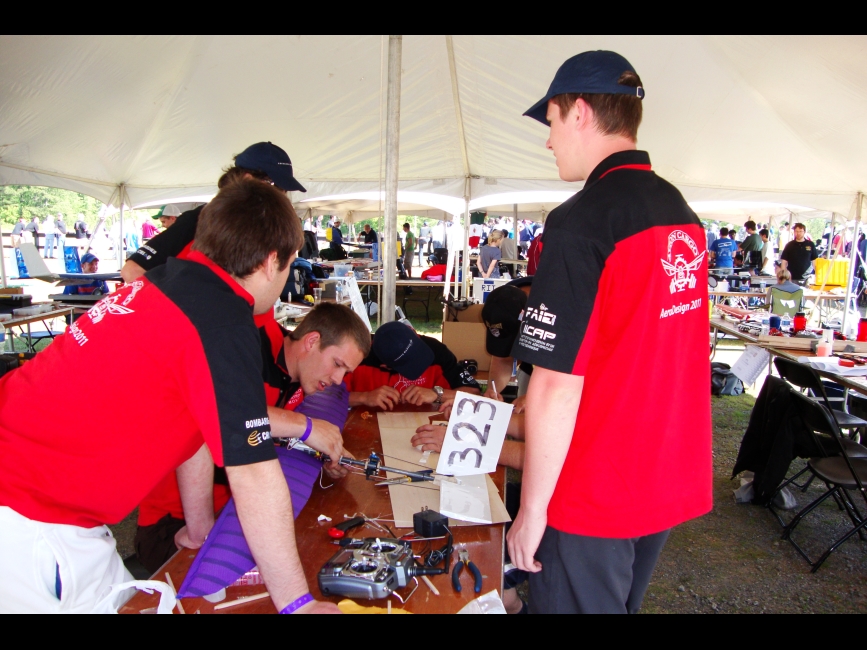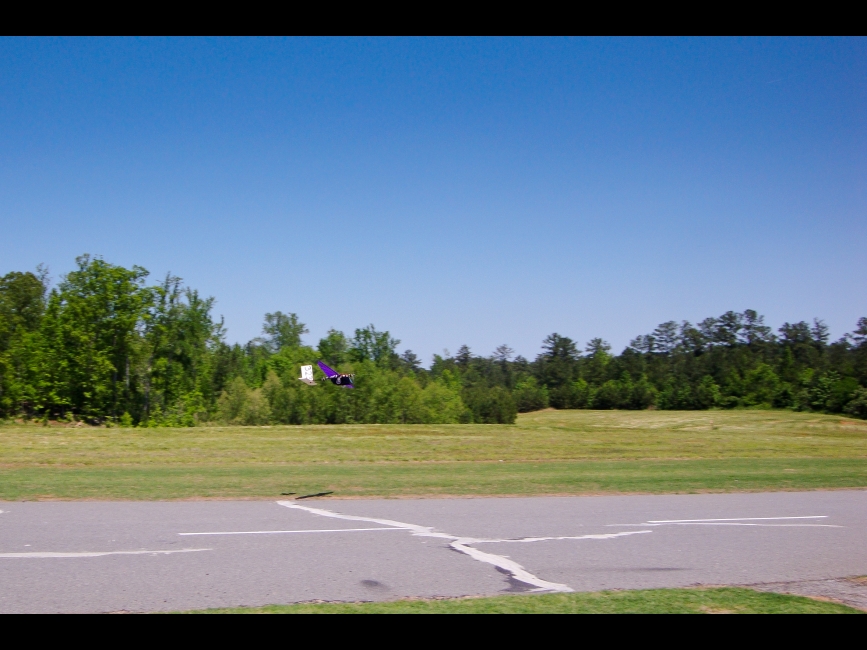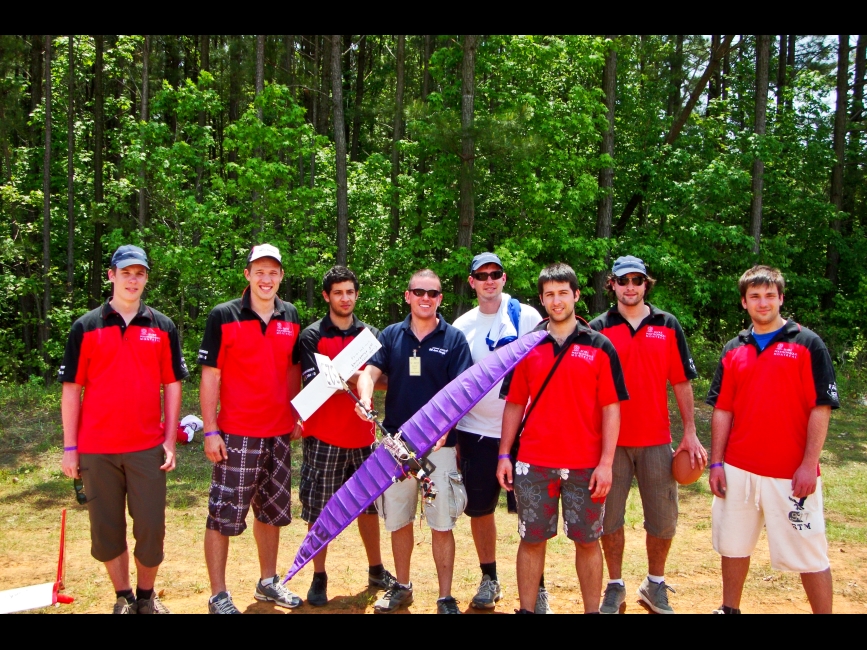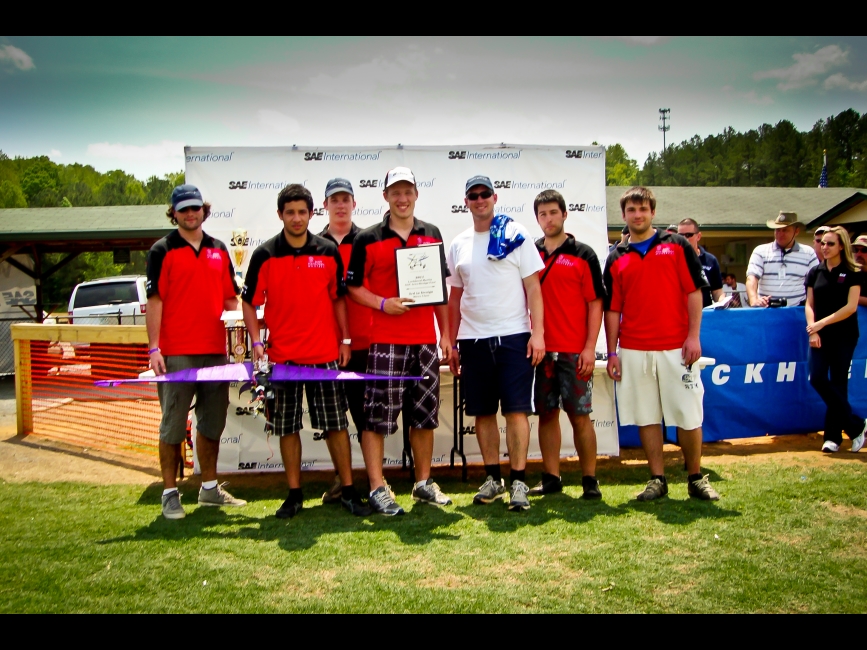Rocking the runway since 1996.
If you are one of our incredible, beloved alumni and you have pictures or stories to contribute, we would love to hear from you! Please reach out to us here!
Regular Class
2019-2020 was the first of the three year cycle of the regular class rules, a challenge where the aircraft: Lifts soccer balls and steel plates as cargo, Takes off in less than 30 meters, Minimises the sum of the wingspan and cargo bay length. The 2019-2020 team pushed the limits with regards to maximising cargo and successfully flew 9 soccer balls and 4.5 pounds of steel at competition. The Chasse-Galerie lifted, with no problems, the most soccer balls of all the aircrafts at the SAE Aero Design East competition. In order to minimise the wingspan- improving the flight score- while simultaneously providing enough lift, the team opted for a biplane configuration. In the same thought process, the soccer balls were arranged in a trellis fashion so as to have a shorter cargo bay. The team, led by Frédéric Larocque finished 5th for design report, 8th for the technical presentation, 5th for flight performance and 5th overall.
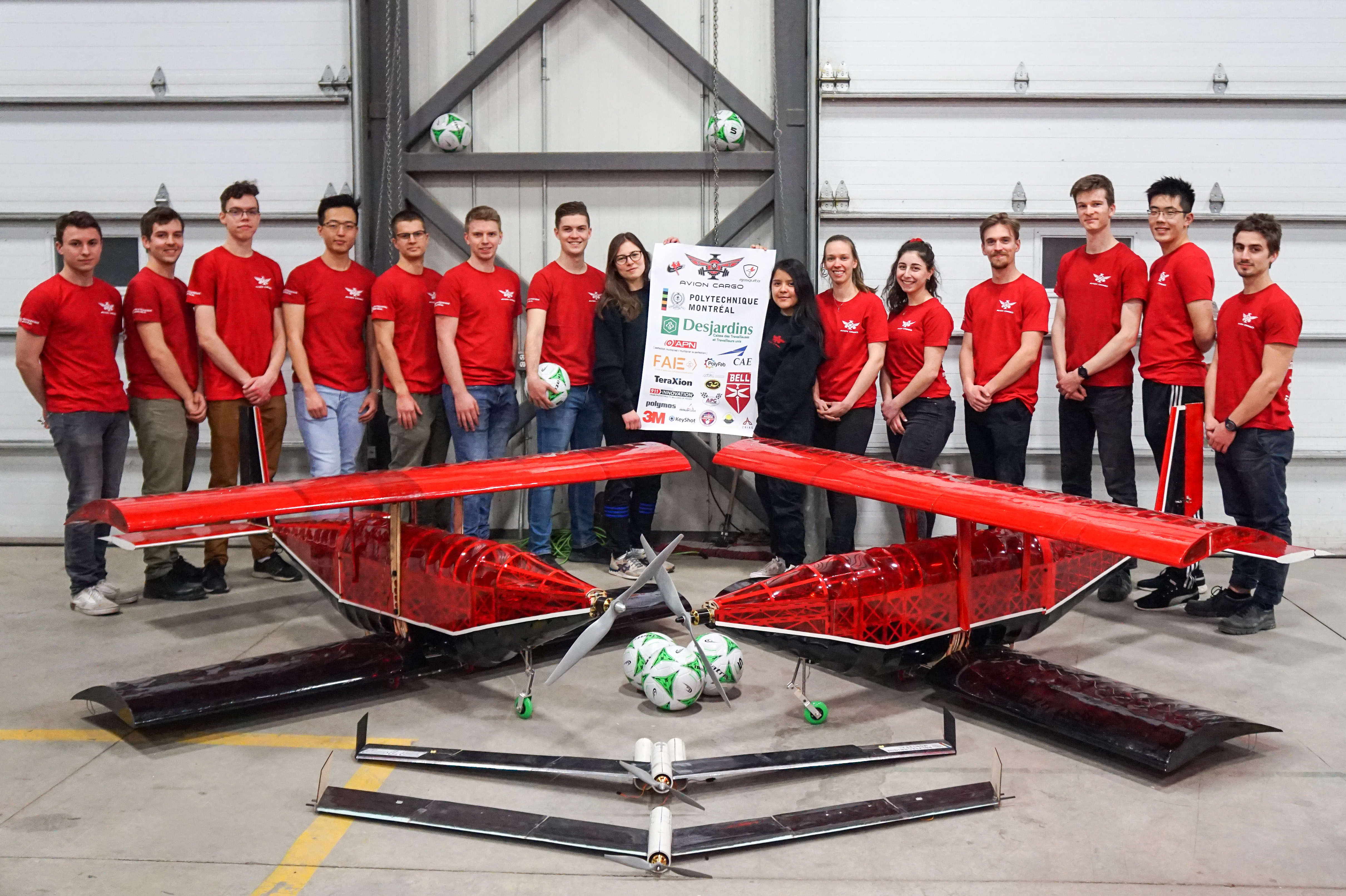
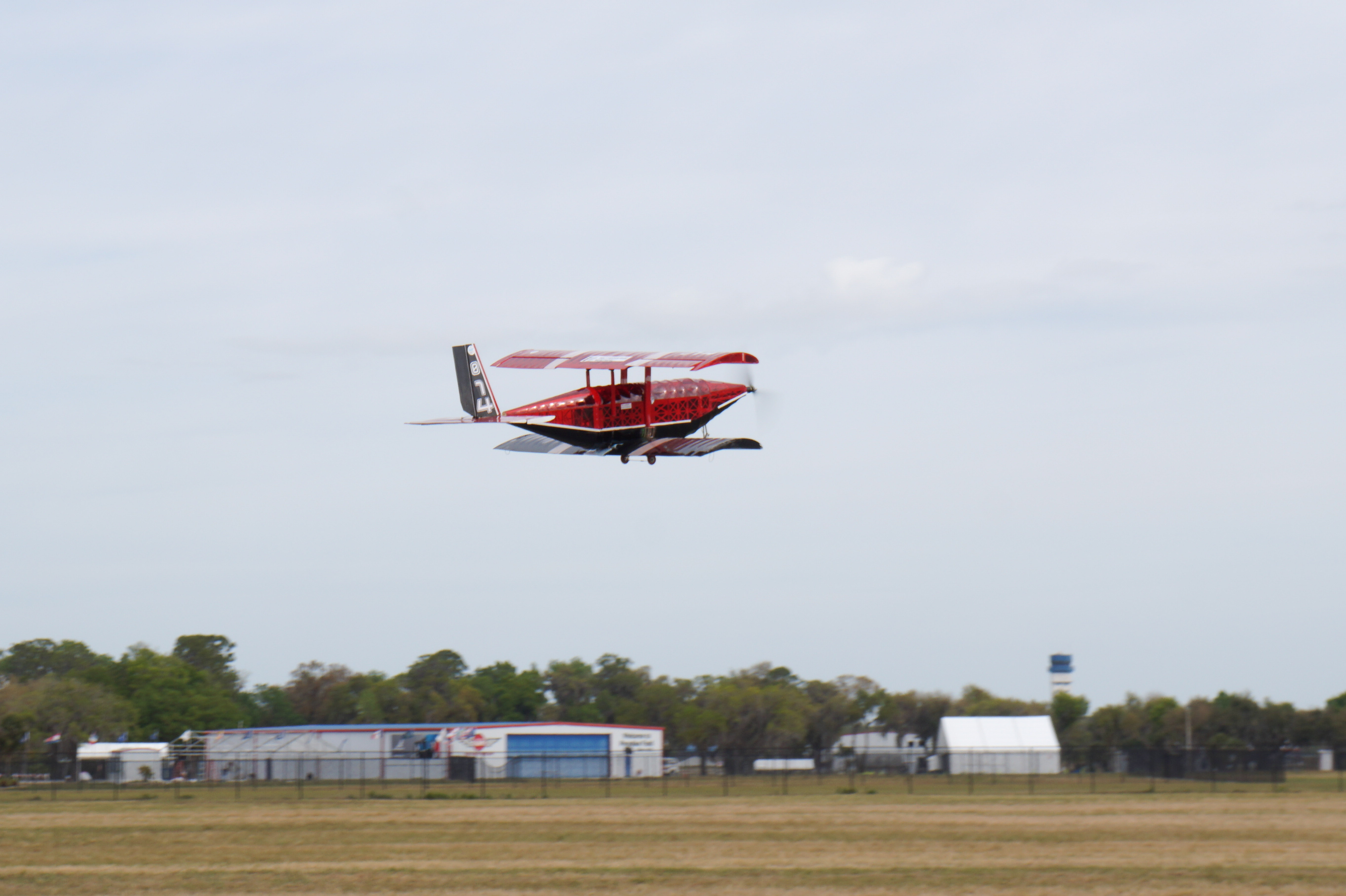
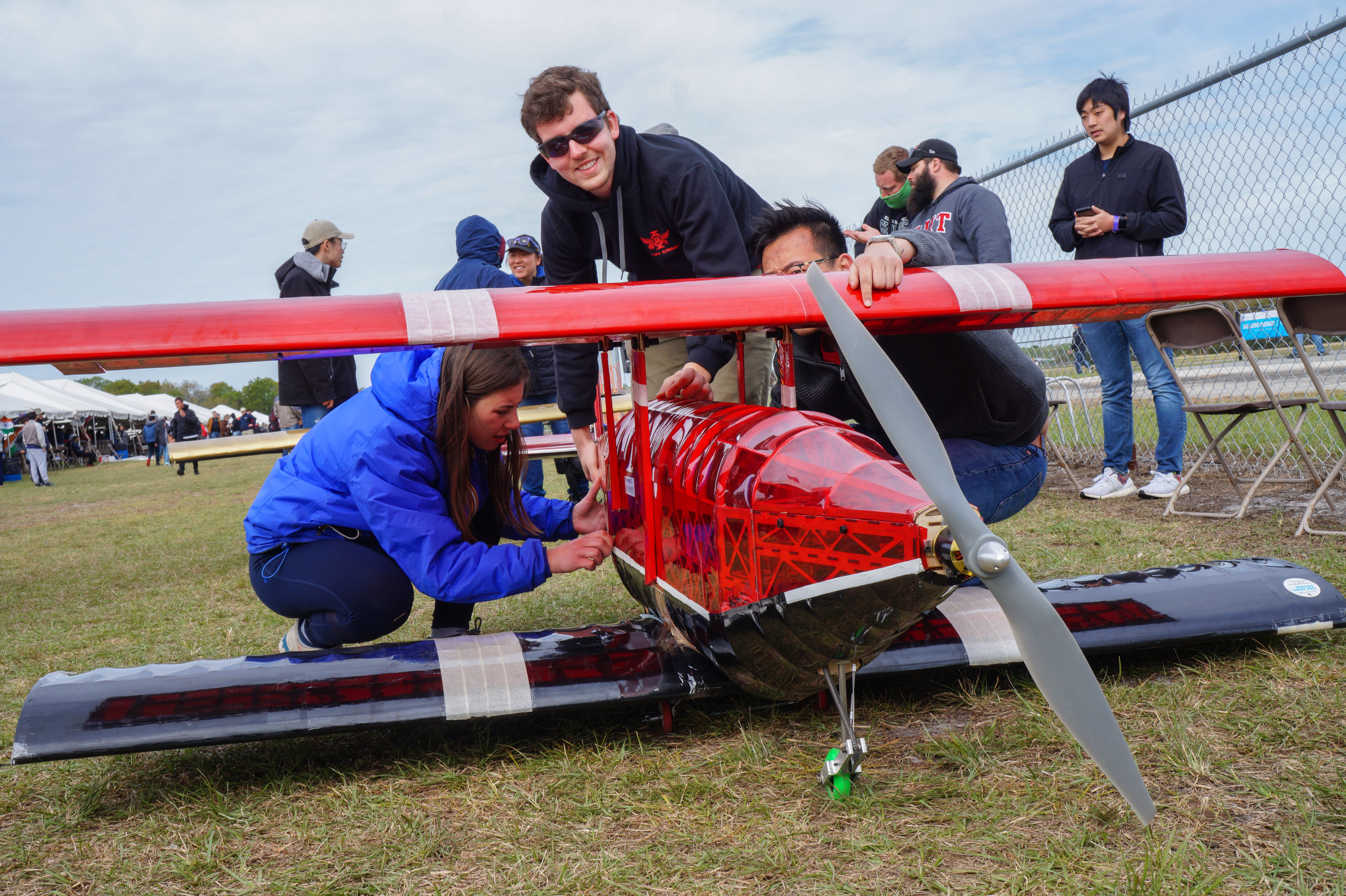
In 2018-2019, the regular team was still transporting tennis balls and steel plates to represent passengers and their baggage. Building off of previous years’ work, the wing design was optimised while not straying too far from the 2017-2018 design. The focus was on the design and optimisation of a new junction, splitting the wing into two, and the fuselage. A new design of a lighter empennage, although quite resistant in torsion, was equally developed.
For the first time in almost 10 years, the team was able to hold a flight test in Québec, in February, before the SAE Aero Design competition. The tests allowed an evaluation of S-Cargo’s flight performances and permitted the team to correct structural design errors.
At the SAE East competition, S-Cargo was subjected to a few under-performance issues, notably at take-off and during low velocity flights. A thorough analysis of performance allowed the team to target the underlying problems in the propulsion system and the wing’s resting angle of attack. These problems were resolved before the next upcoming competition.
At the SAE West competition, the aircraft performed exactly as the new performance evaluations predicted. It shocked its competitors with its consistency, which drove it to 3rd place in flight performance. The team also performed well in the technical presentation, finishing 3rd in the category. The team, led by Pierre-Nicolas Stock, won 3rd overall.
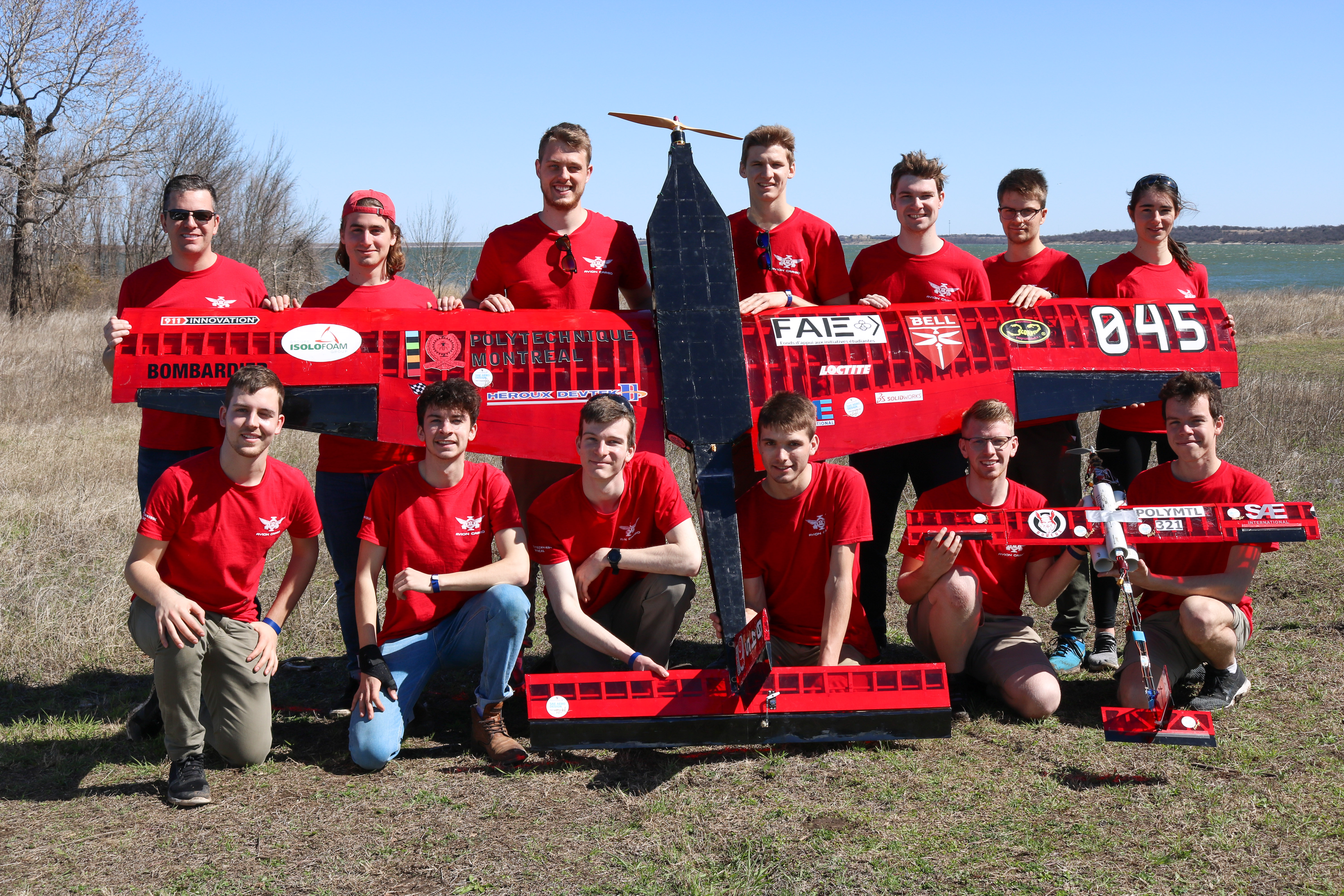
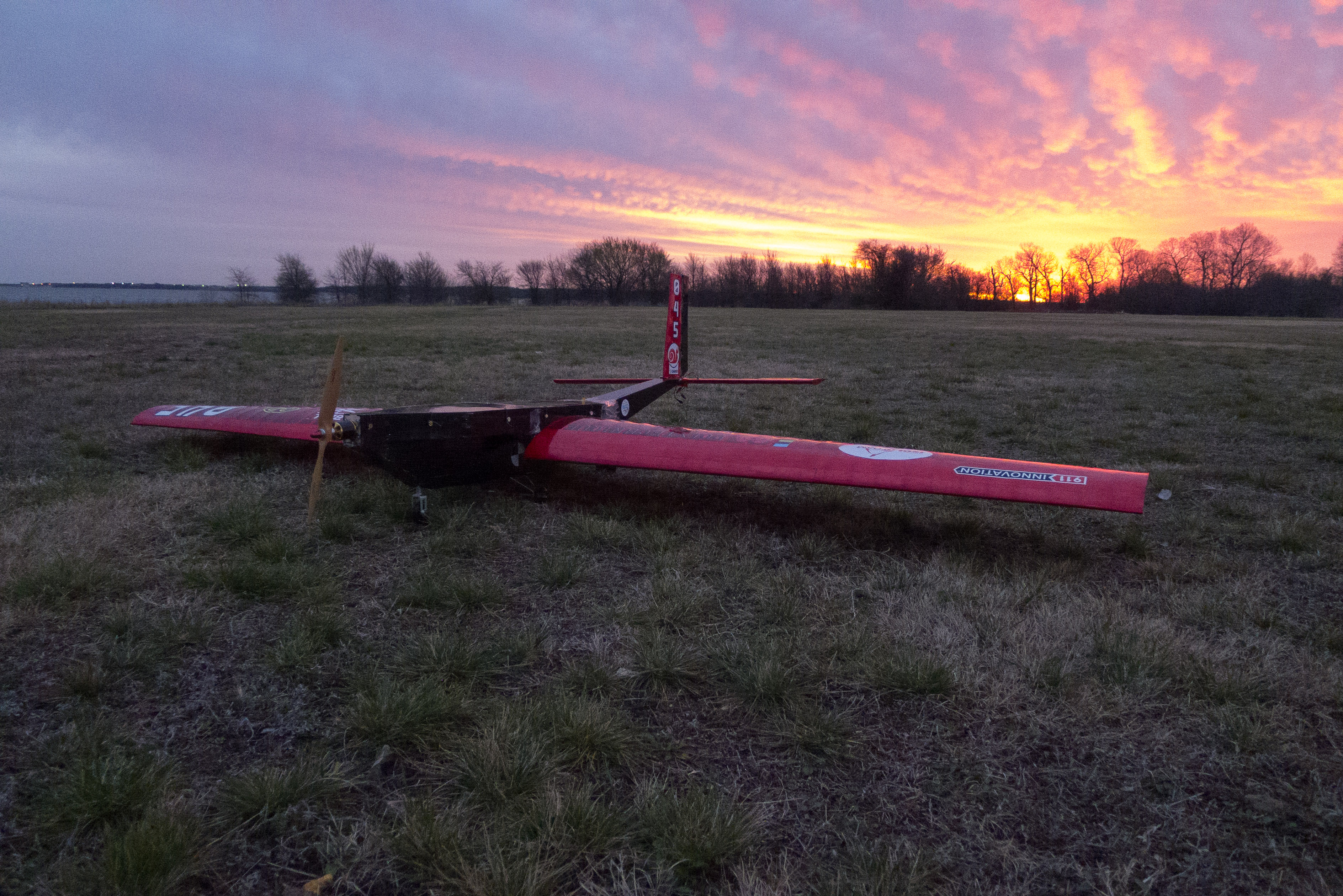
The challenge of the competition was to transport tennis balls which represented passengers, as well as steel plates representing baggage. The 2017-2018 regular aircraft completely changed its configuration from the previous years’ design. Instead of a vertical plane of balls, the tennis balls were placed horizontally. While the airplane was much wider, it was less affected by crosswinds.
The design of Spirit of St Poly was focused on a new and optimised design of the wing. The rest of the configuration remained relatively classic: tricycle landing gear, tractor configuration and a tailboom.
At competition, several problems arose with the empennage. Feeling the effects of considerable efforts, it twisted and made control more difficult. Avion Cargo still successfully completed one flight round. The team, led by Phillipe Léger, finished 19th overall.
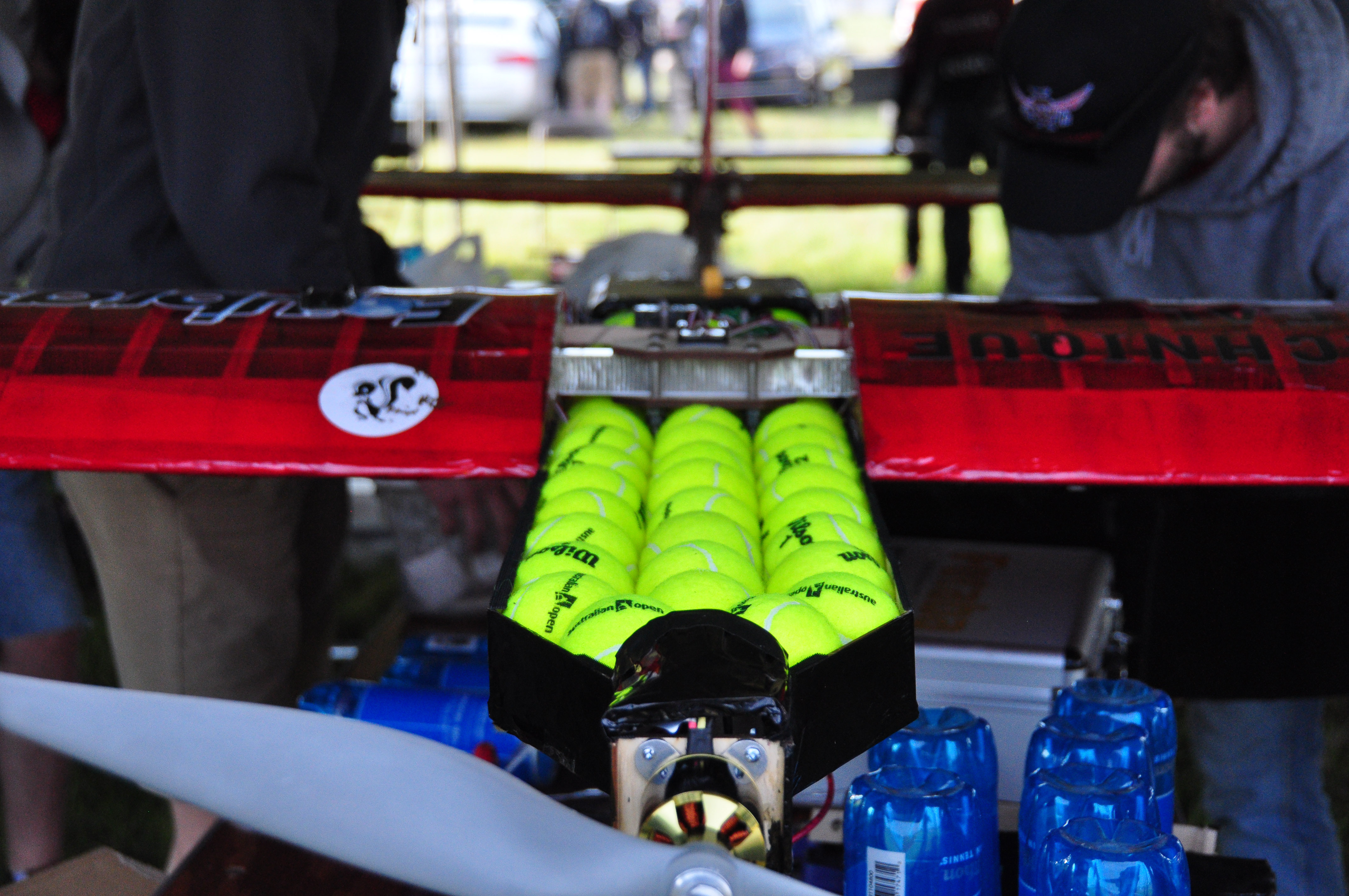
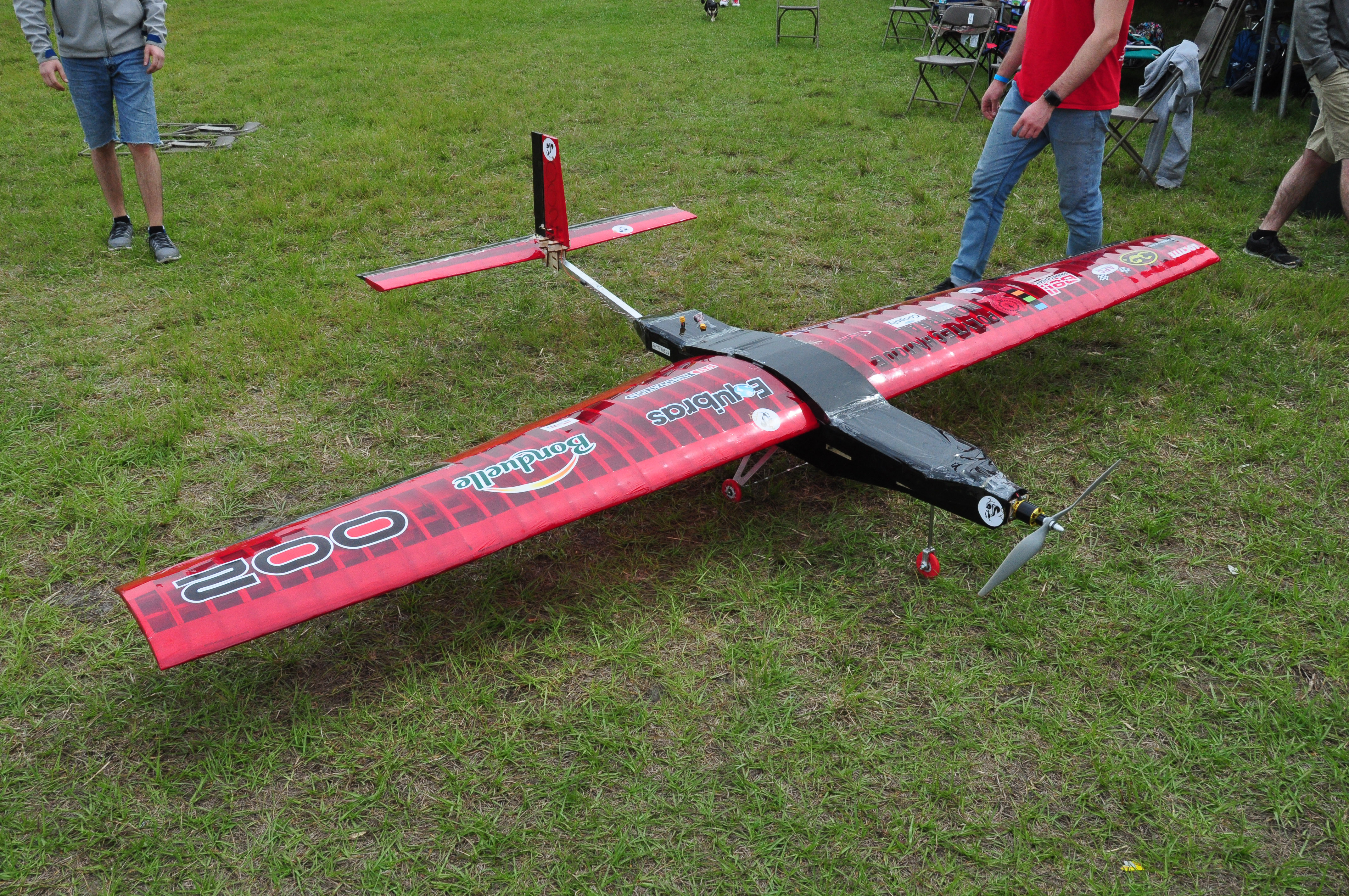
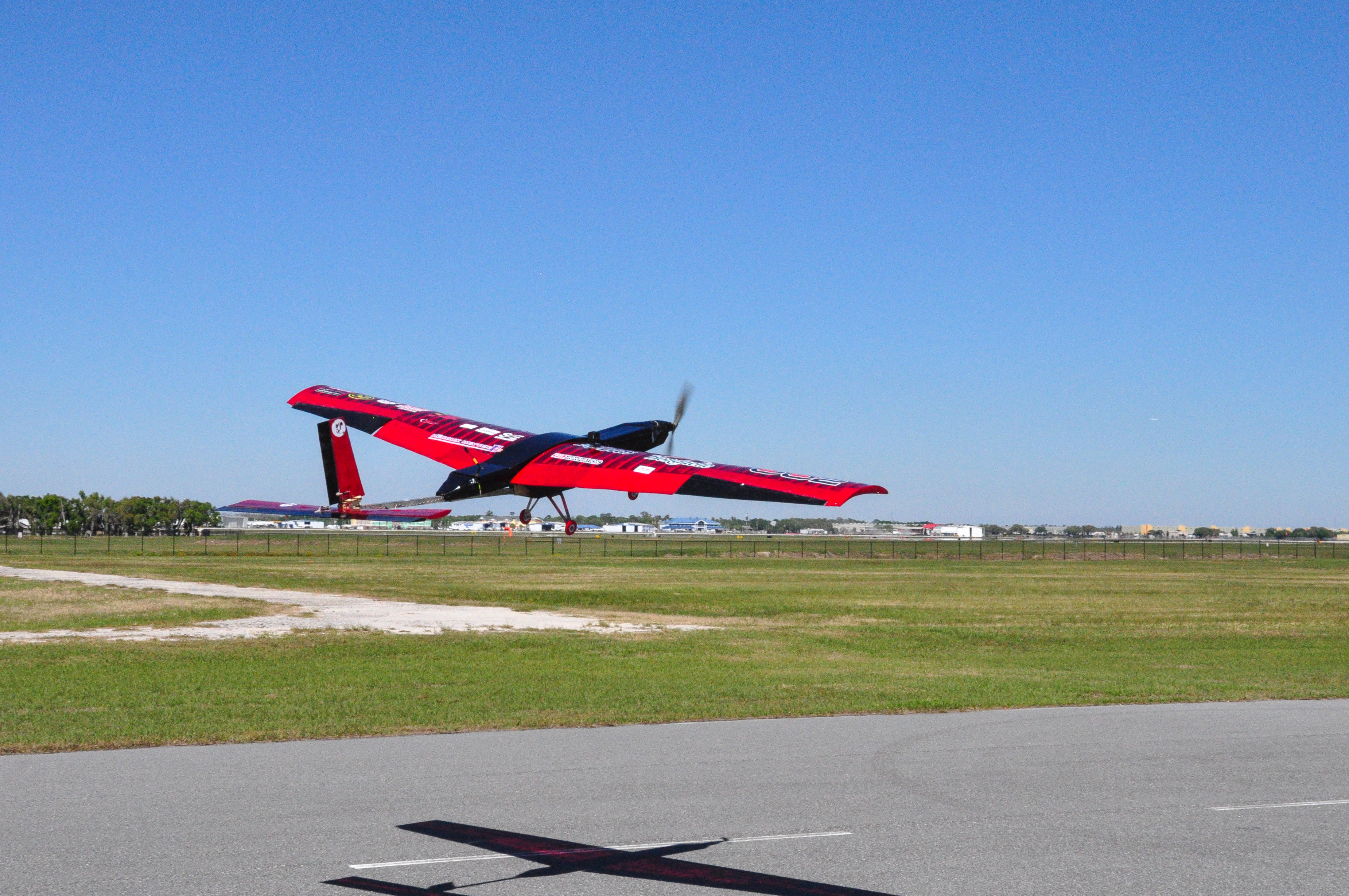
The new challenge for the regular class brings with it a new type of cargo. Tennis balls, representing passengers and steel plates representing their baggage with a ratio of baggage/passenger to be respected were introduced as the new style of cargo. As well, there were certain standards of positioning to be respected. The Journey lifted 25 tennis balls and 0.5 pounds of “baggage” per tennis ball. The team, led by Dominic Dufour, finished 16th in design, 7th in technical presentation, 11th for most payload lifted and 13th overall.
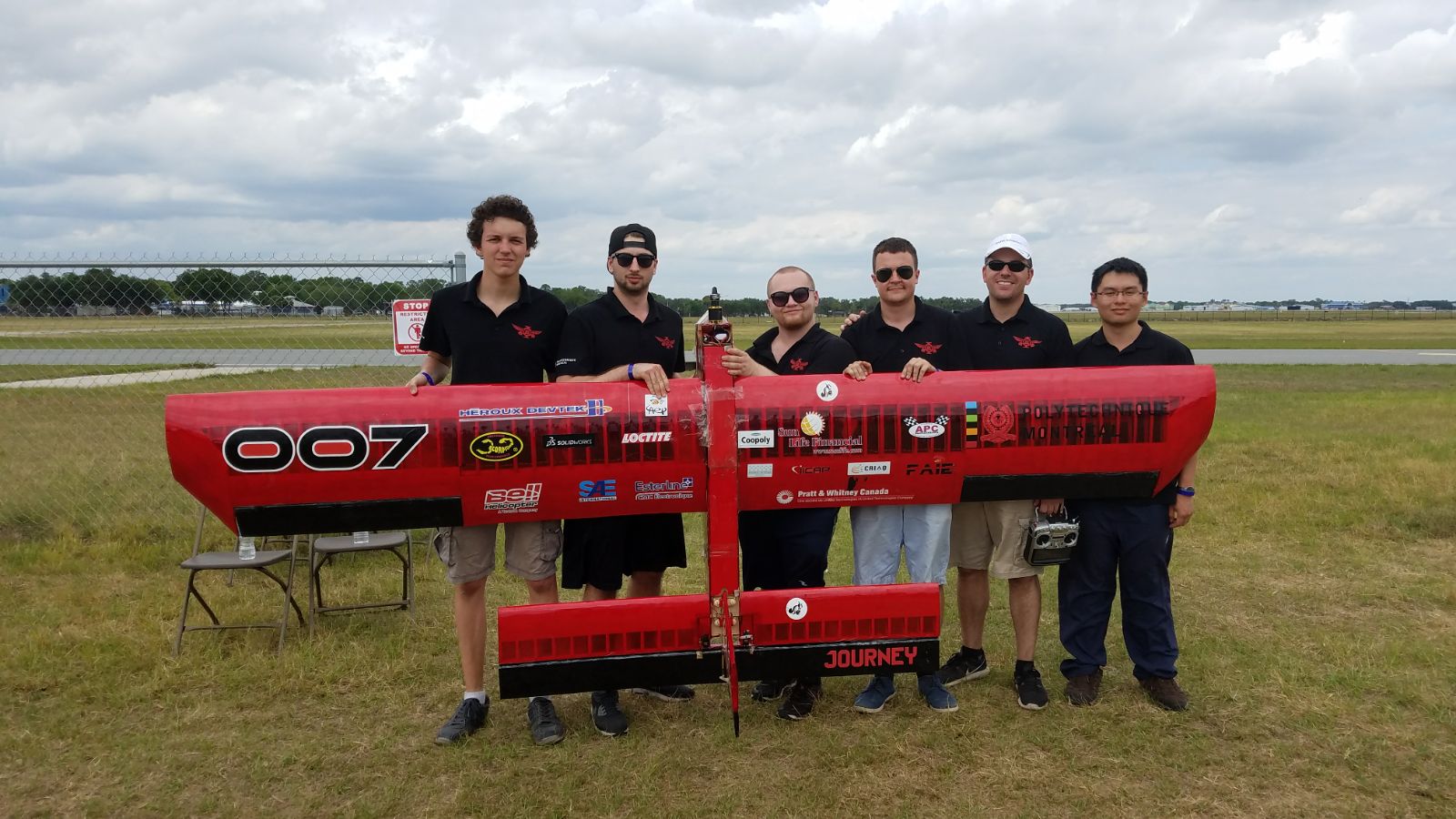
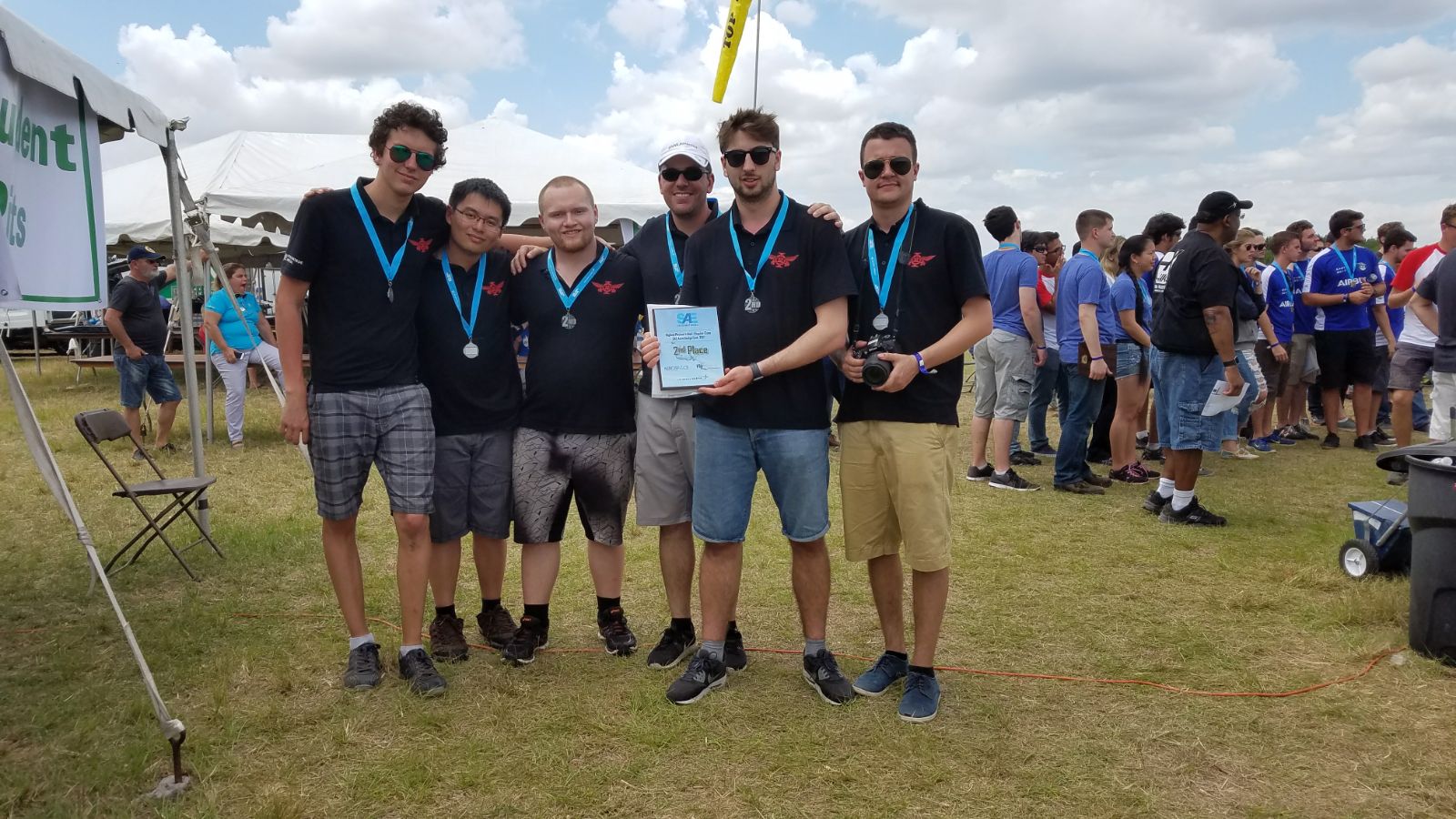
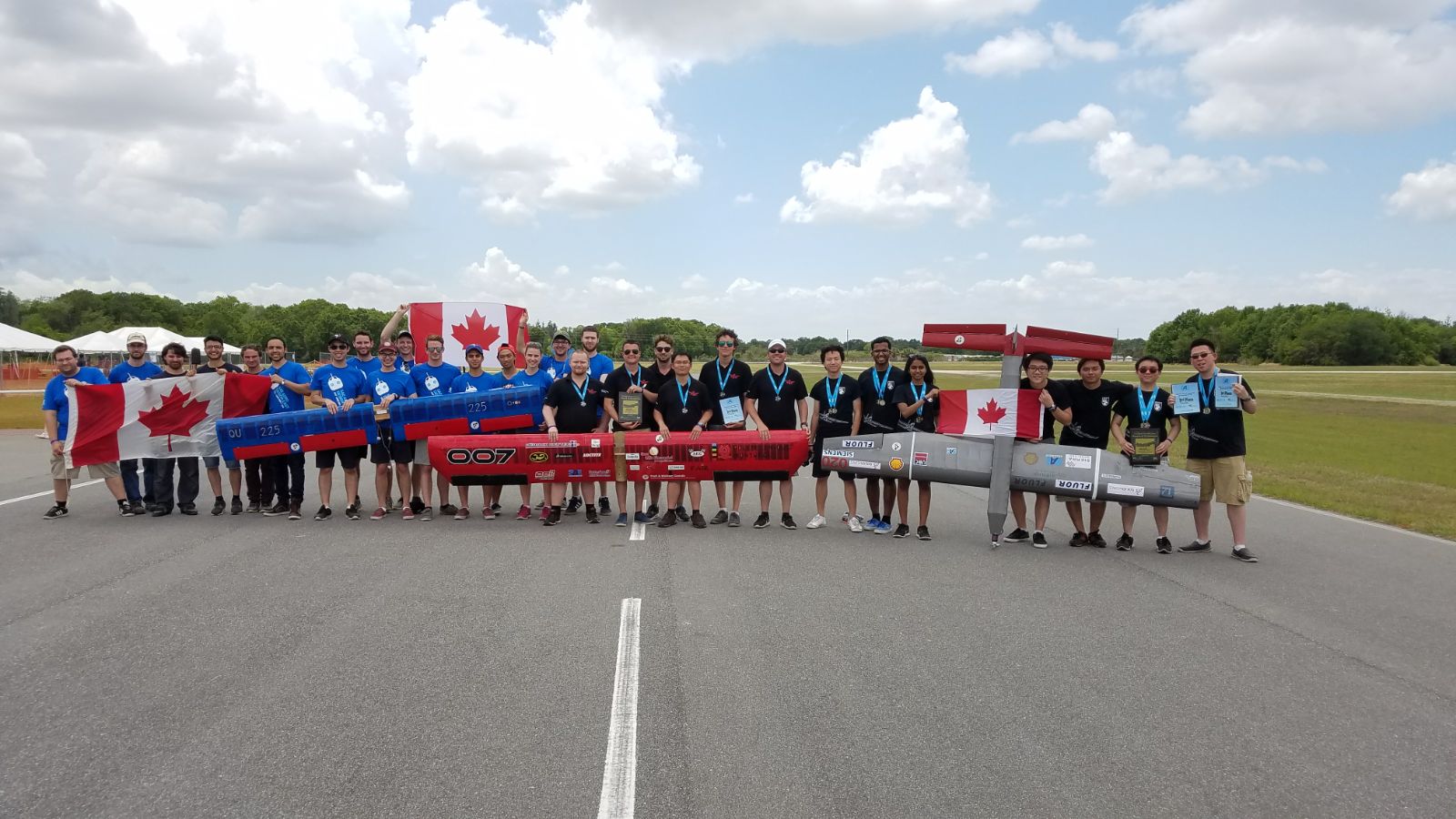
The third year of the 2014 challenge, the Northern Wind is the optimised version of its predecessors, Skyron and Aeolus. A monoplane high-wing, with its H-shaped empennage, the Northern Wind has improved aerodynamics with considerably reduced drag, thanks to the team’s research and hard work. With Laura Sab Leblanc as team captain, Northern Wind had a maximum payload of 26.6 pounds.


2015 was the second of the three year cycle of the challenge. The rules were the same as 2014: the sum of the dimensions could not surpass 175 inches, the take off must be done in less than 200 feet and the cargo bay must be unloaded in less than one minute. The team, led by Sabrina Watelle, designed and built a monoplane, with a high-wing and an H-shaped empennage. Skyron was a competitive build with a maximum payload of 26.5 pounds.
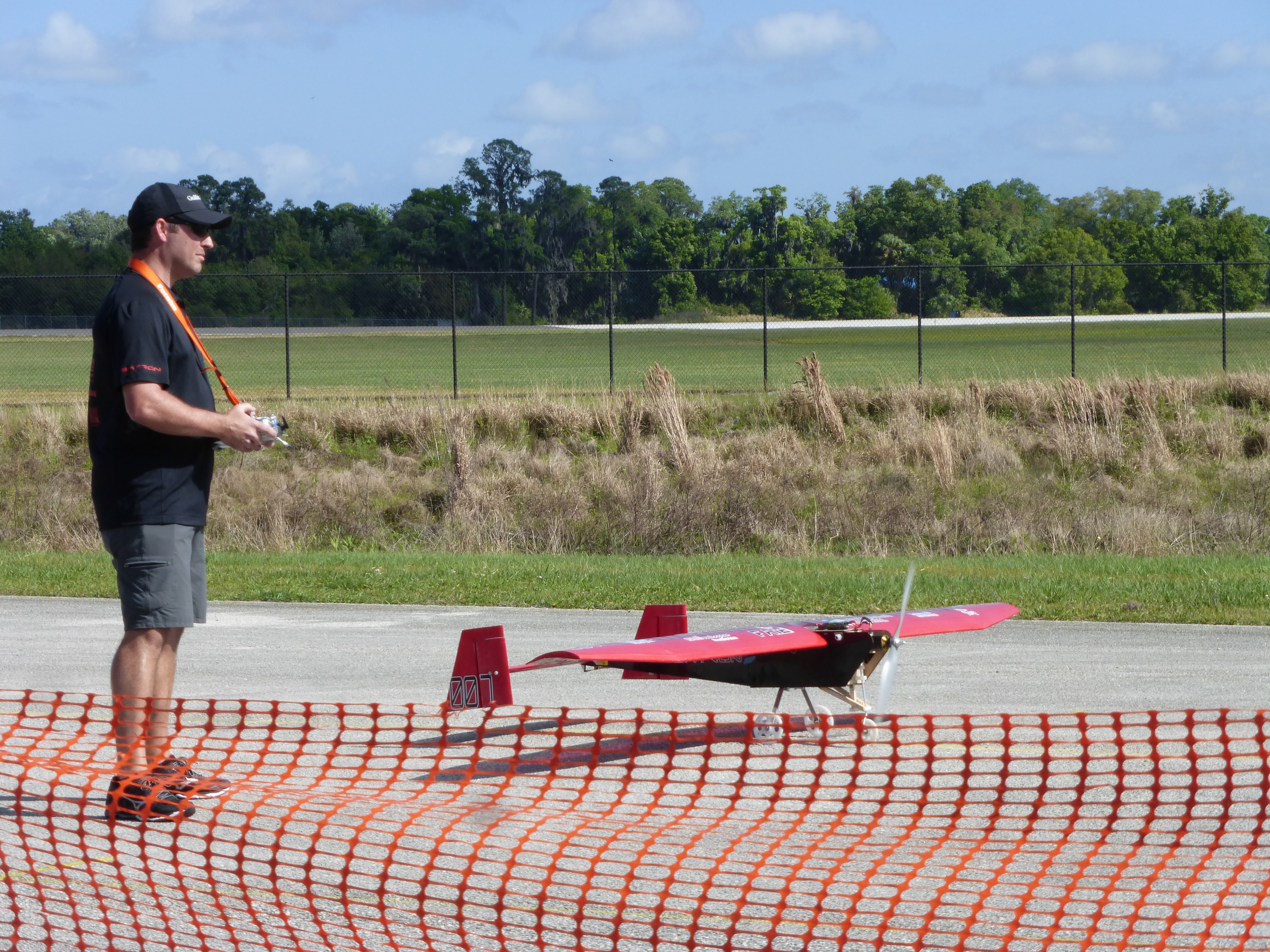
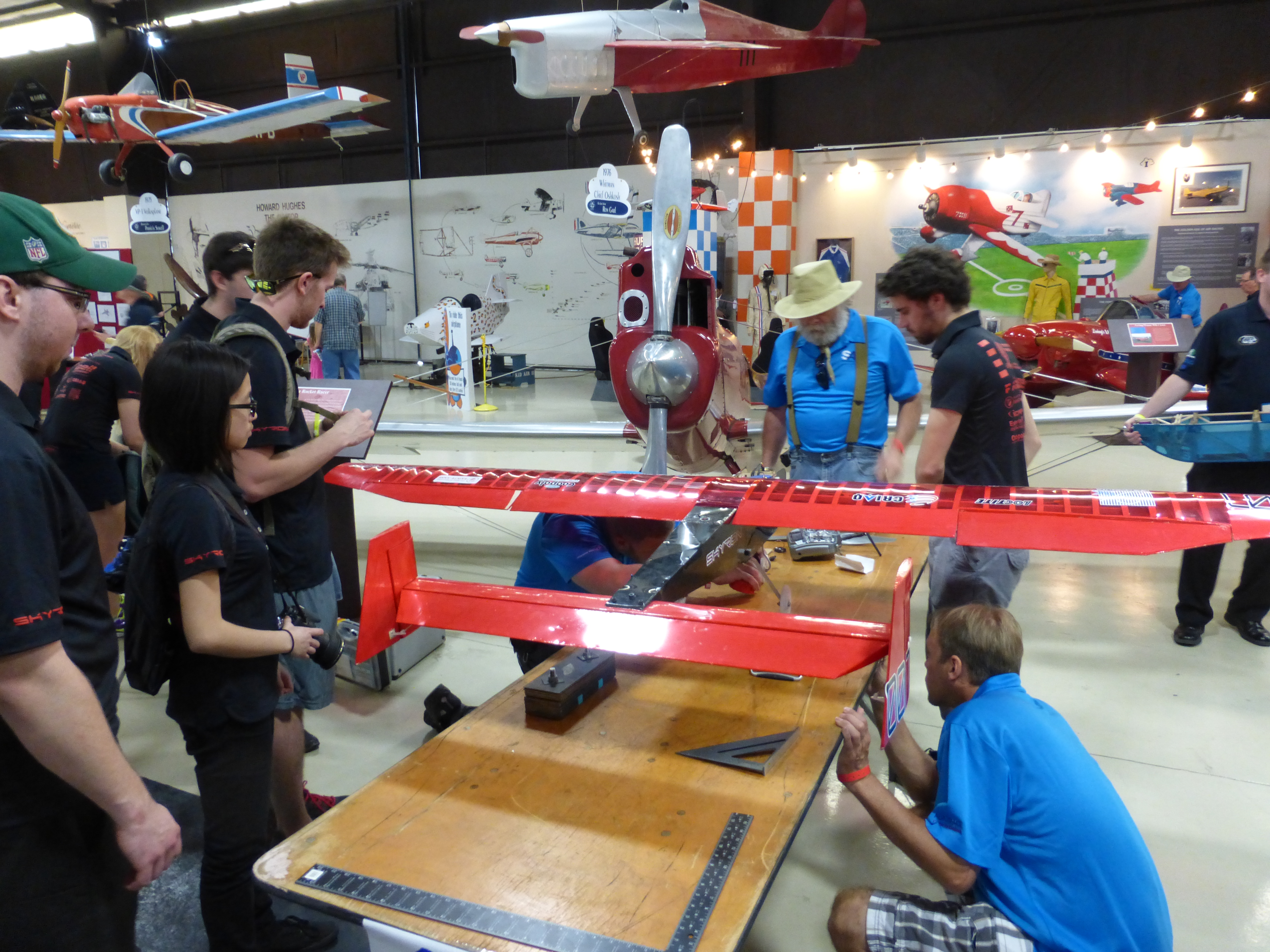
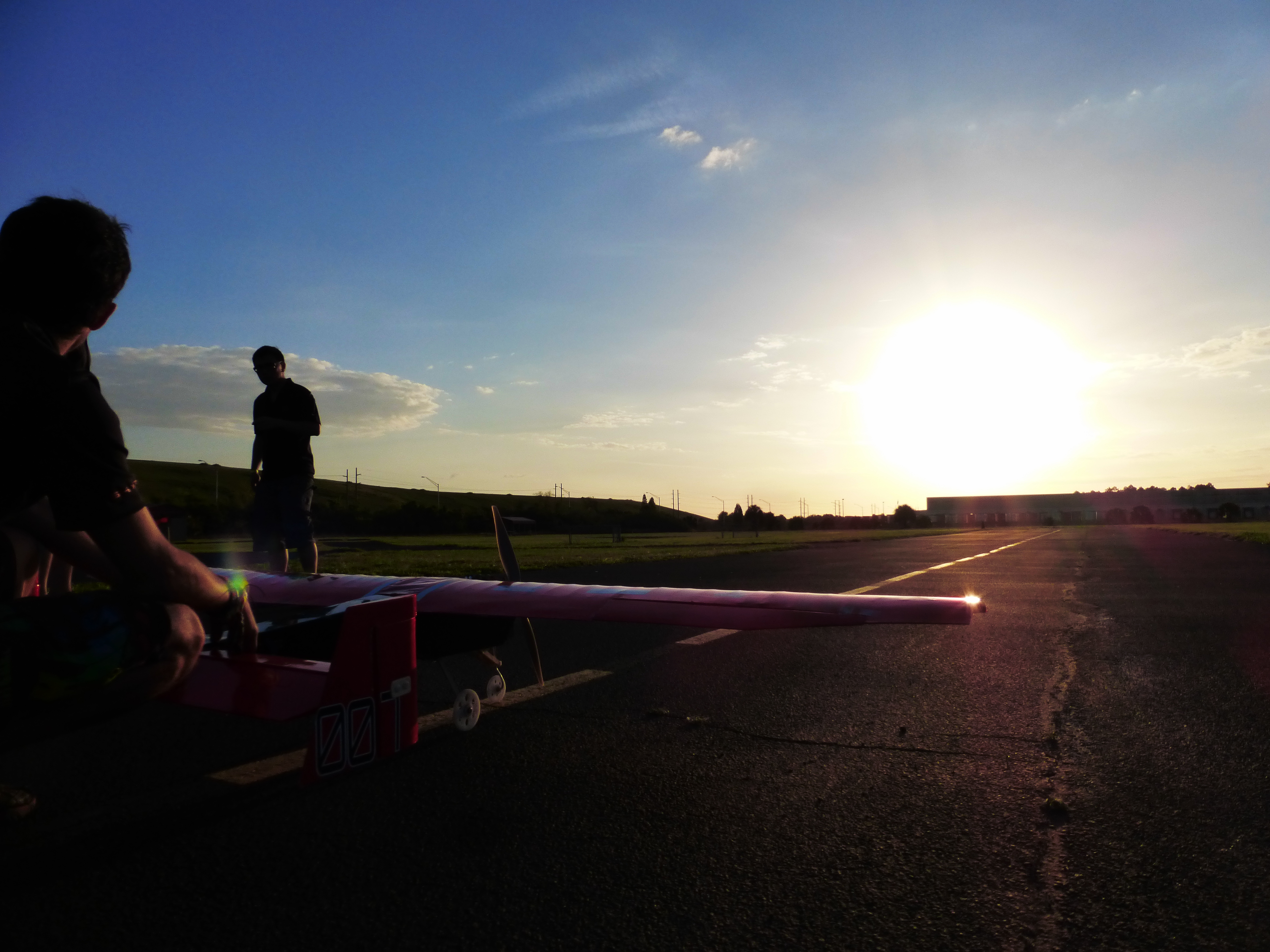
With a sum of dimensions that does not exceed the 175 inches permitted by the rules, Aeolus had a maximum payload of 28.4 pounds. The team, led by Sabrina Watelle, also had the challenge of taking off in less than 200 feet and unloading the cargo bay entirely in less than one minute. Aeolus was a monoplane high-wing with an H-shaped empennage and a nose that opened up to the cargo bay.
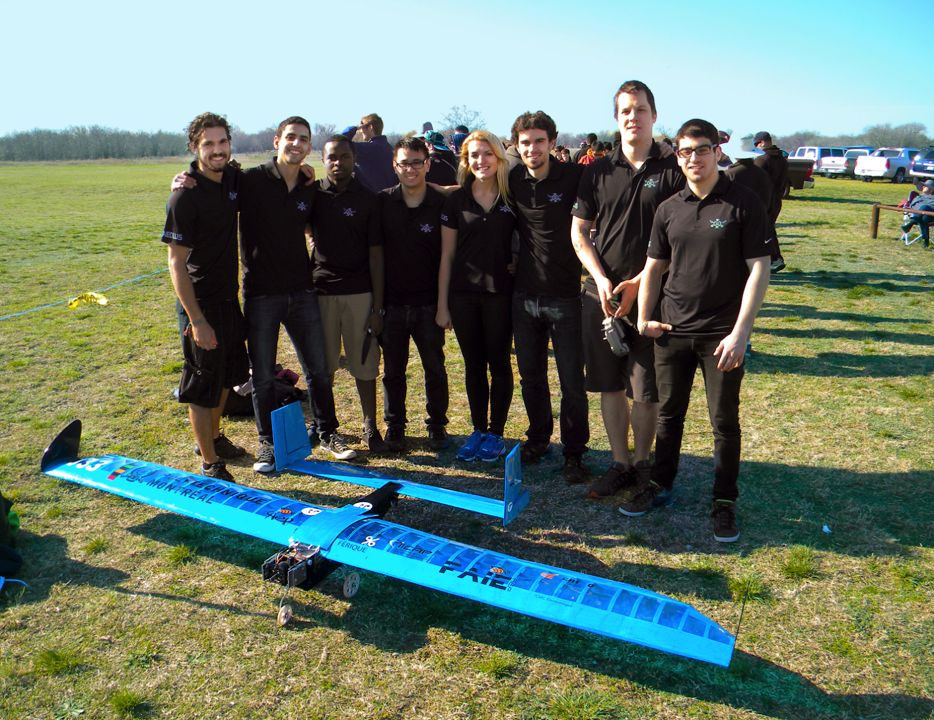
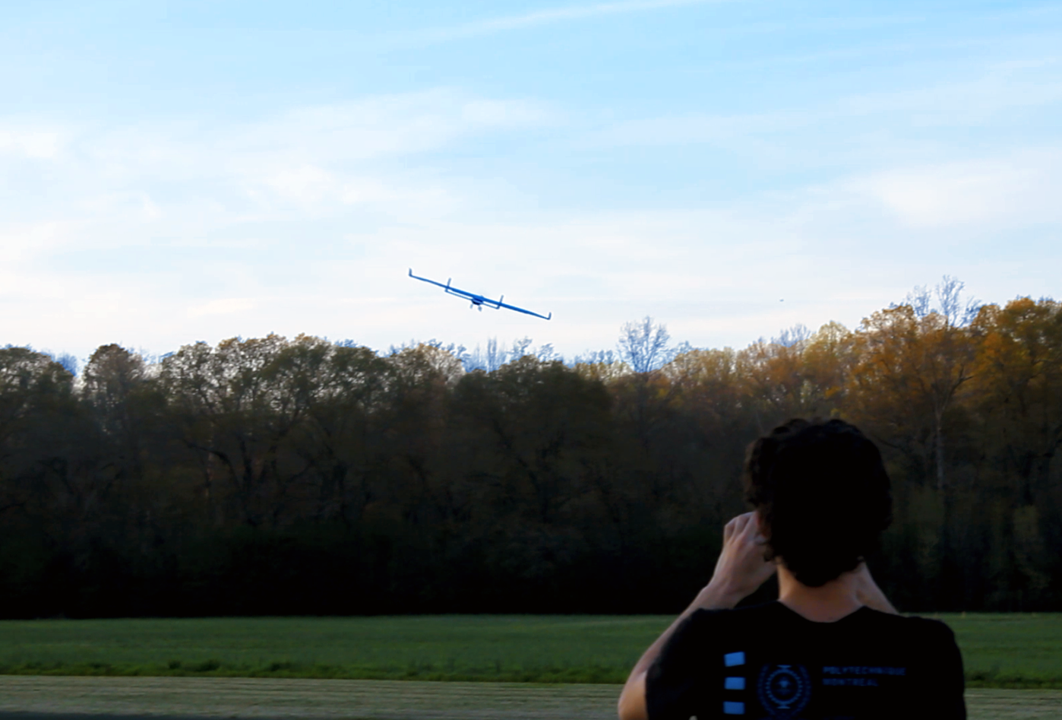
In the regular category, 2013 was the third year of the challenge where the sum of the dimensions was limited to 225 inches or less. The team, led by Martin Lafrance, responded to this challenge with Zeppelin. A monoplane high-wing, Zeppelin was the competitor to look out for. In competition, the airplane lifted up to 35 pounds of cargo.
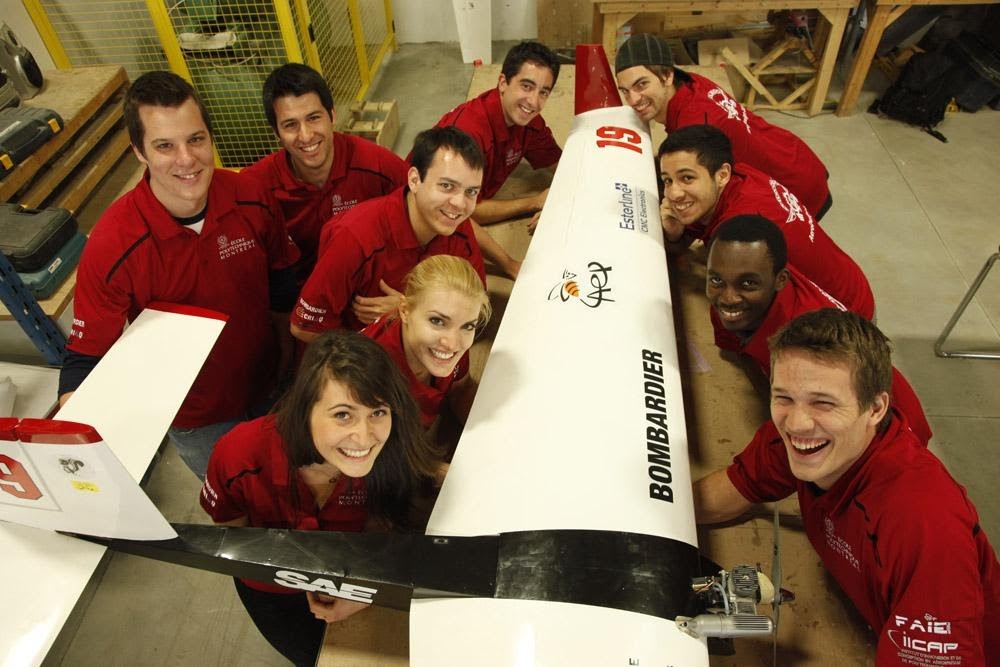
The 2012 Polytechnique team dove head-first into the challenge of building the airplane that lifts the most cargo, all while respecting the dimensions limit of 225 inches and taking off in less than 200 feet. The team displayed their talents in presenting the Red Eagle, an aerodynamic monoplane. It had a home-made airfoil, tested in a wind tunnel against traditional airfoils. As well, the team developed a wing incidence angle control system but unfortunately, it was not ready in time for the competition. The Red Eagle flew with 34.1 pounds of cargo. The team, led by Martin Lafrance, finished 1st in technical presentation, 2nd in design, 2nd for most payload lifted and 1st overall.




With a modified challenge for 2011, the team put their best foot forward with their creativity with an optimised design to meet the new rules. The limit of the sum of the dimensions was 225 inches, a takeoff in less than 200 feet and the challenge to lift the heaviest payload possible, the team performed several trade studies for the best solution. The monoplan was the final decision with several original characteristics. Whitcomb winglets and a mechanism in the empennage that allows a rotation to have access to the cargo bay are two examples. The team, led by Anthony Rode, finished 3rd in design and 6th overall.
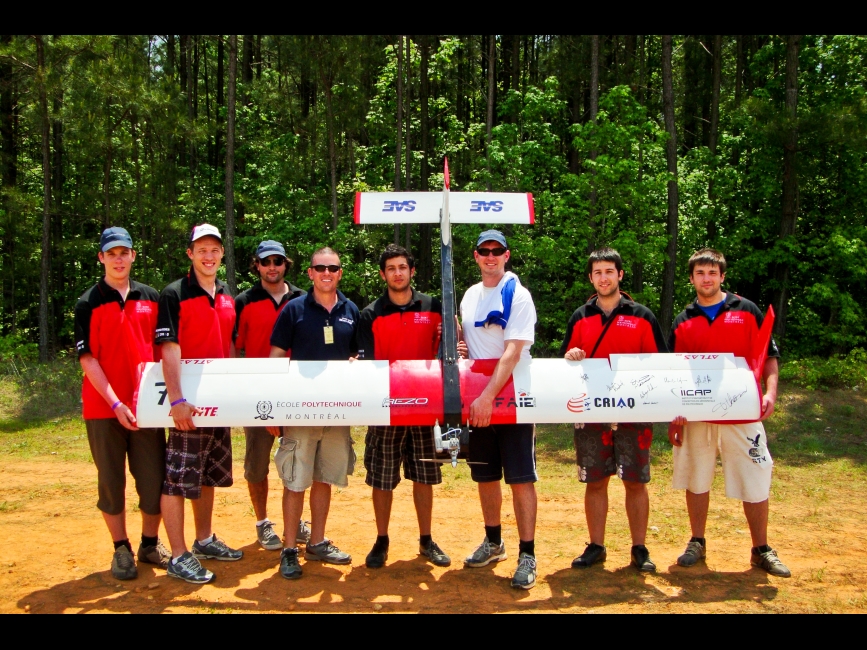
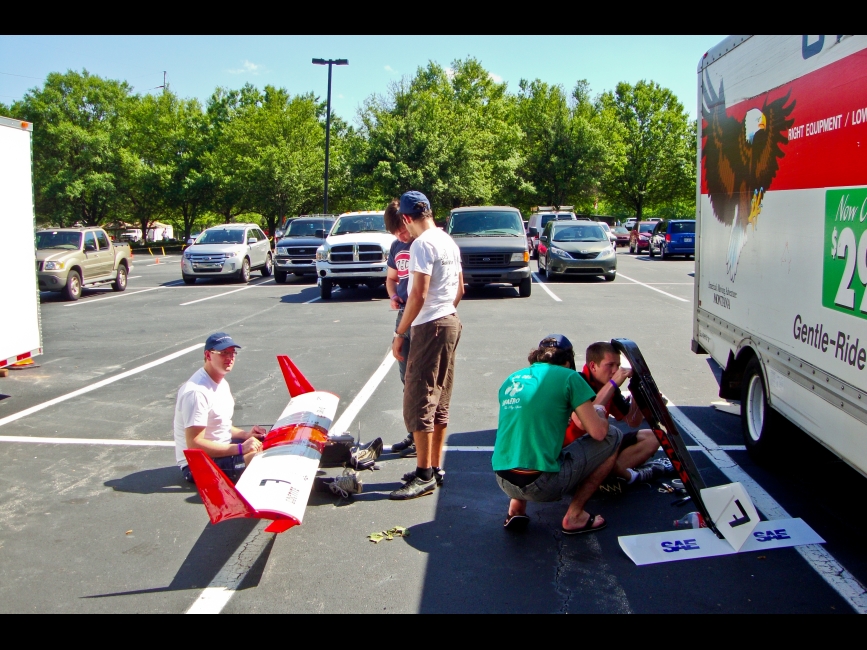
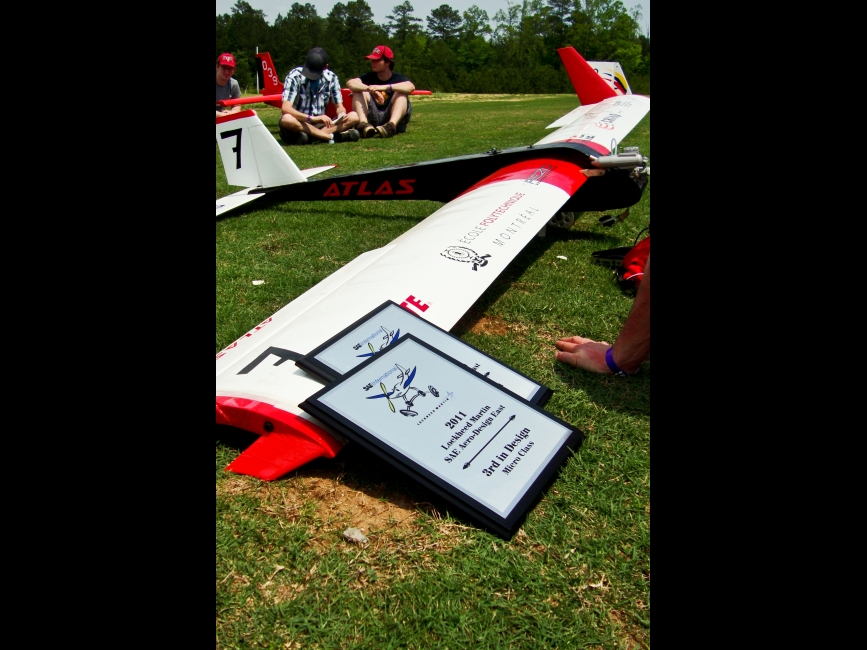
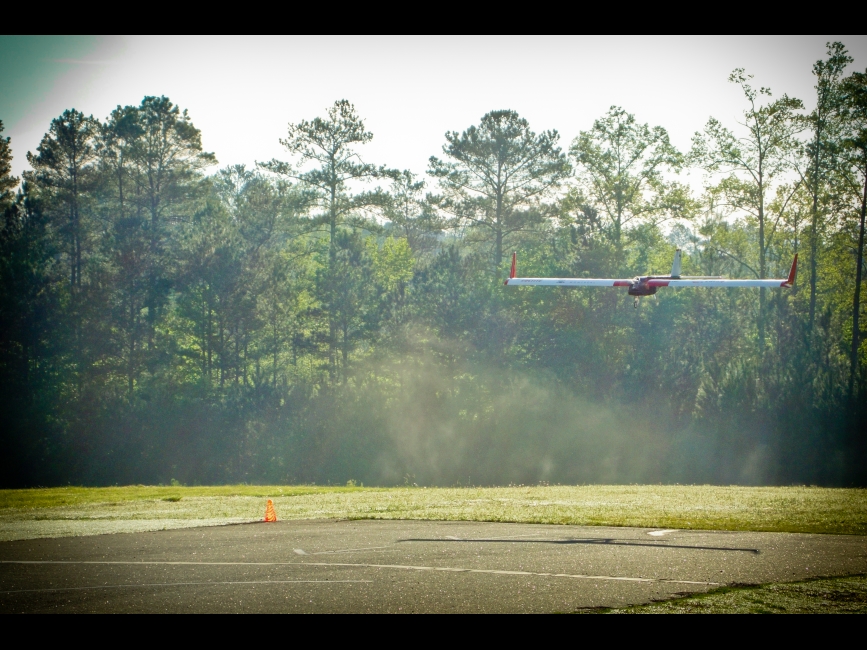
The challenge of the regular class this year entailed not only restrictions on materials but also dimension constraints. With no plastic composites permitted, the aircraft is intended to lift the maximum cargo all while respecting the dimensions limit. The sum of the length, height and width could not surpass 200 inches, and the cargo bay had an imposed minimum size of 5x5x10 inches. Hyperion succeeded in meeting these requirements and more. A biplane made of wood and aluminum, it lifted up to 11 pounds of cargo. The team, led by Anthony Rode, won first place in the regular class for most payload lifted and overall.
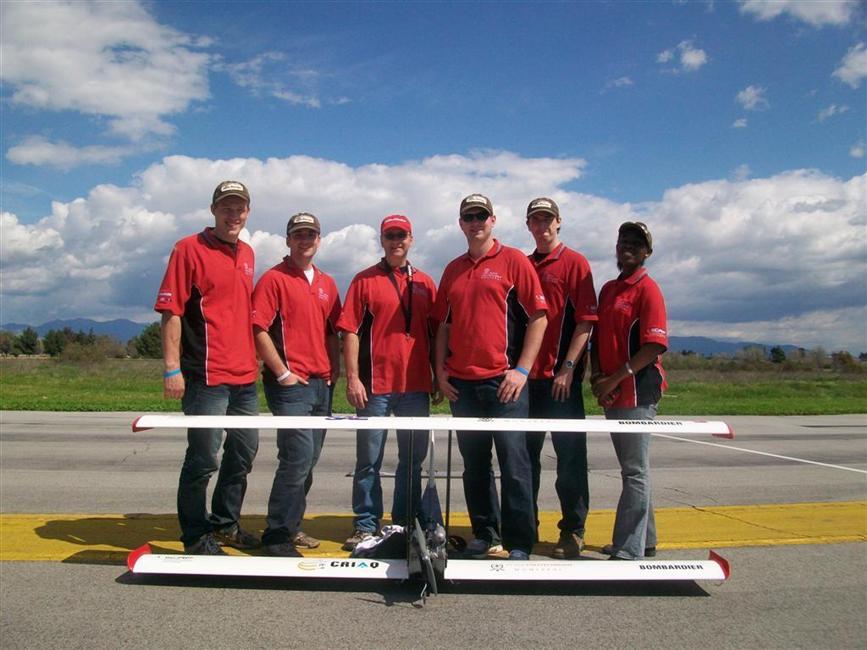
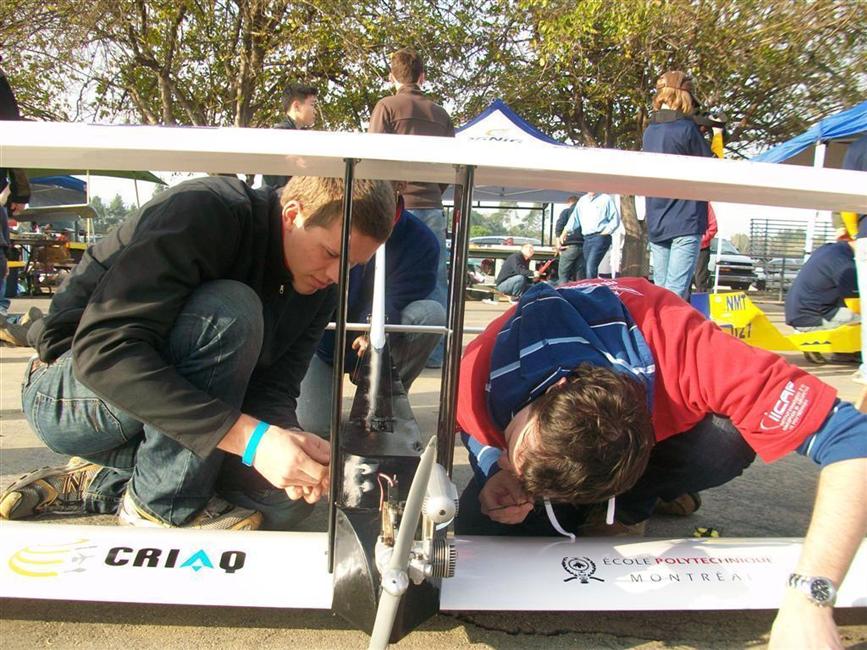
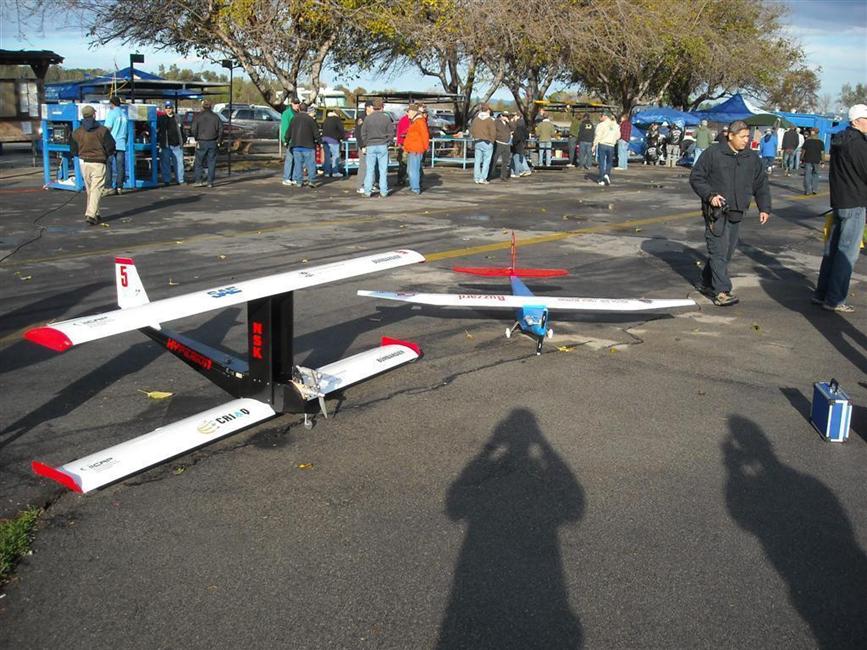
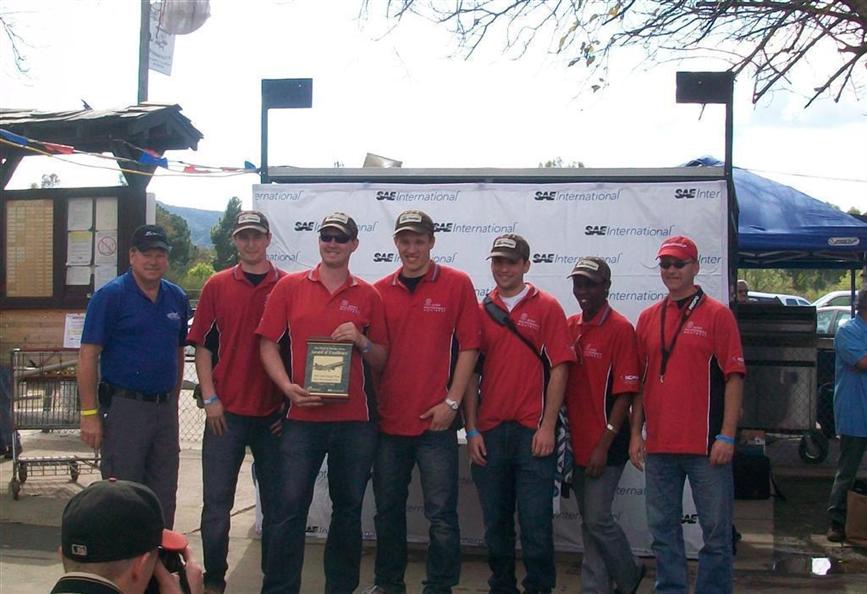
In the context of a challenge limiting the dimensions of the aircraft, the Polytechnique Montreal team brought forward their creativity and ingenuity with the Red Storm. The biplane met all the constraints of the competition, the sum of the length, width and height of the airplane did not exceed 175 inches. With its carbon fiber and balsa wings and a large cargo bay volume, the Red Storm performed well within its category. The team, led by Vincent-Olivier Philie, finished 1st overall in the regular class.
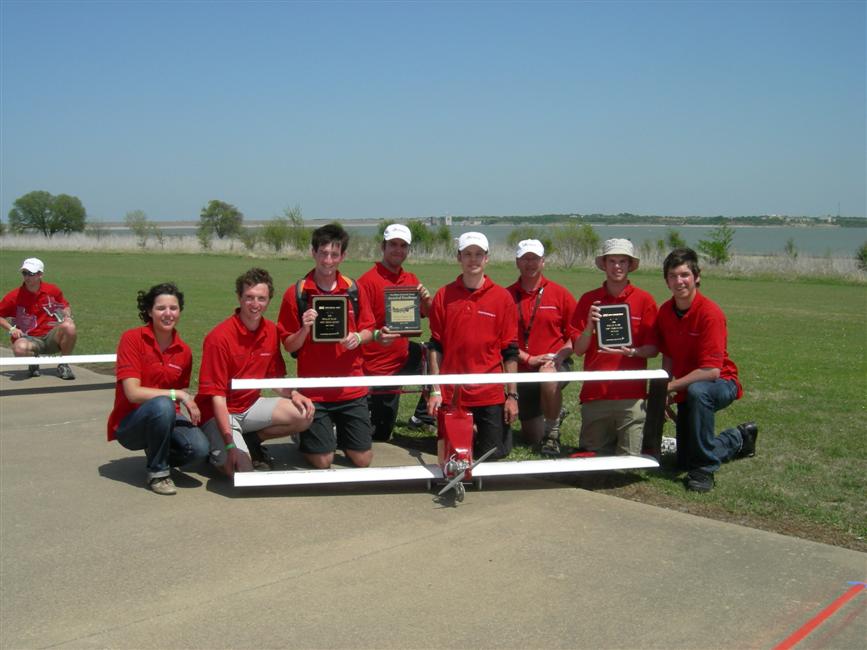
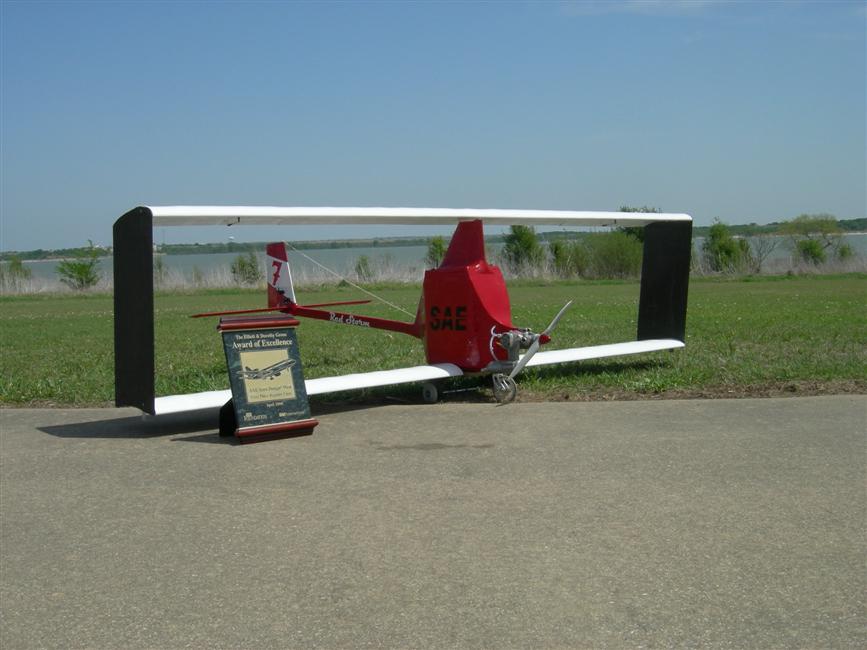
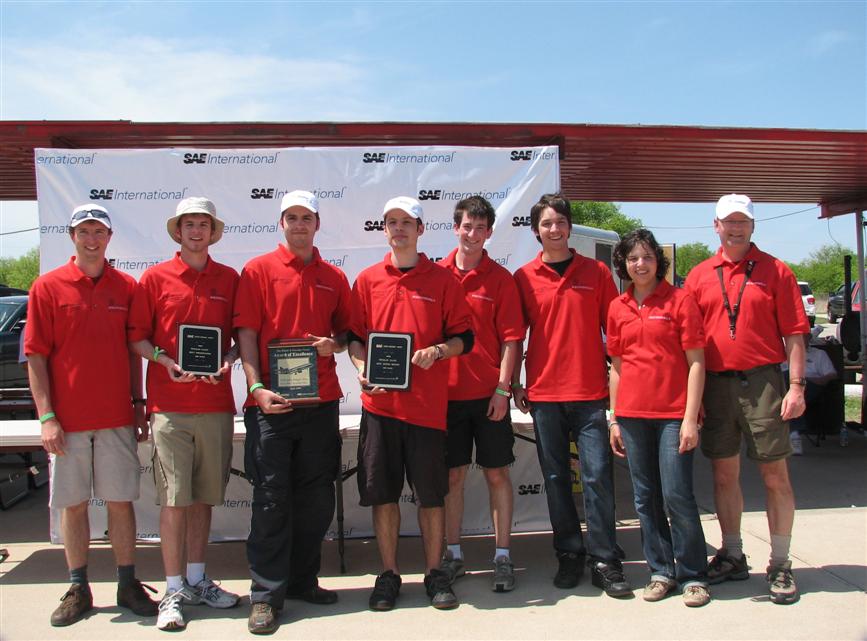
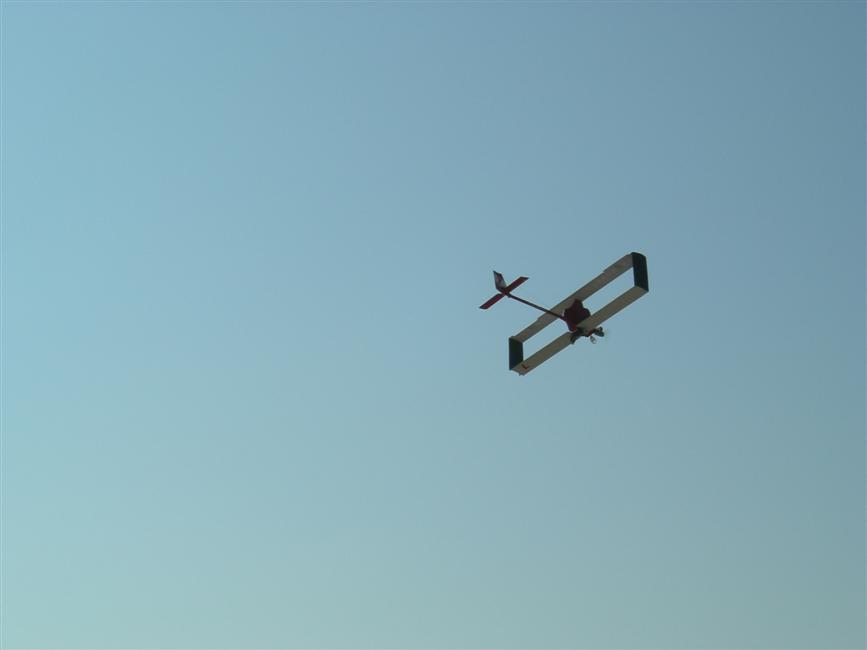
Micro Class
The year 2020-2021 for the micro class has been a big change, as new rules have been released for the competition. The mandate: to transport a maximum of cardboard boxes and metal plates while taking off over a distance of 8 feet and minimizing flight time. Our team had to completely redesign the aircraft to meet these new constraints. Much larger than previous planes, Lightning of Poly has a 48-inch wingspan and has an open fuselage carrying two large 12-inch x 12-inch boxes and over 0.67 lbs of metal plate. Even though we couldn't make it to the competition this year, the team, led by Noor Mahieddine, were able to secure a place on the podium in 3rd place in the oral presentation and finished 5th in the technical report. We also got to see the fruits of our labor watching our plane take off at the flight demonstration.



This year’s micro class was the third year of the PVC tube challenge. The challenges of the project included: Maximizing the weight of PVC tubes lifted, Assembly in less than three minutes, Both cargo and aircraft must fit inside a cardboard box with strict inner and outer dimensions. Our 2019-2020 team brought lots of creativity and ambition to the table and settled on a flying wing configuration as the final design. The configuration entails a blended fuselage and no tail, making stability all the greater a challenge. Equally so, the wings were made of carbon fiber composite, a first in the association’s history. The team, led by Alexis Basset and Emily Cohen, had some good flights and spectacular crashes, finishing 13th in technical report and marketing presentation, 15th in flight performance and 13th overall.




The challenge of the Micro class 2018-2019 was the same challenge as 2019-2020: the aircraft was designed to be disassembled and stored in a small box, with a cargo load in the form of PVC tubes. Taking up the work of the 2017-2018 team, pushing the limits by improving their design, Boreas lifted a 12 inch long PVC tube more than their predecessors, for a total of three tubes. Amongst the competitors, Boreas stood out due to its large wingspan and its considerable length (about 4 by 4 feet), despite being disassembled and stored in a box that was only 1ft by 1 ft by 4 inches. As well, the aircraft performed extremely well, with stable flights against the difficult conditions of Fort Worth of the flight days (plenty of gusts of wind). The team, composed entirely of first year students and led by Laurent Edmond-Brunet, finished 9th overall, 7th for flight performance, 11th for the technical presentation and 17th for the design report.
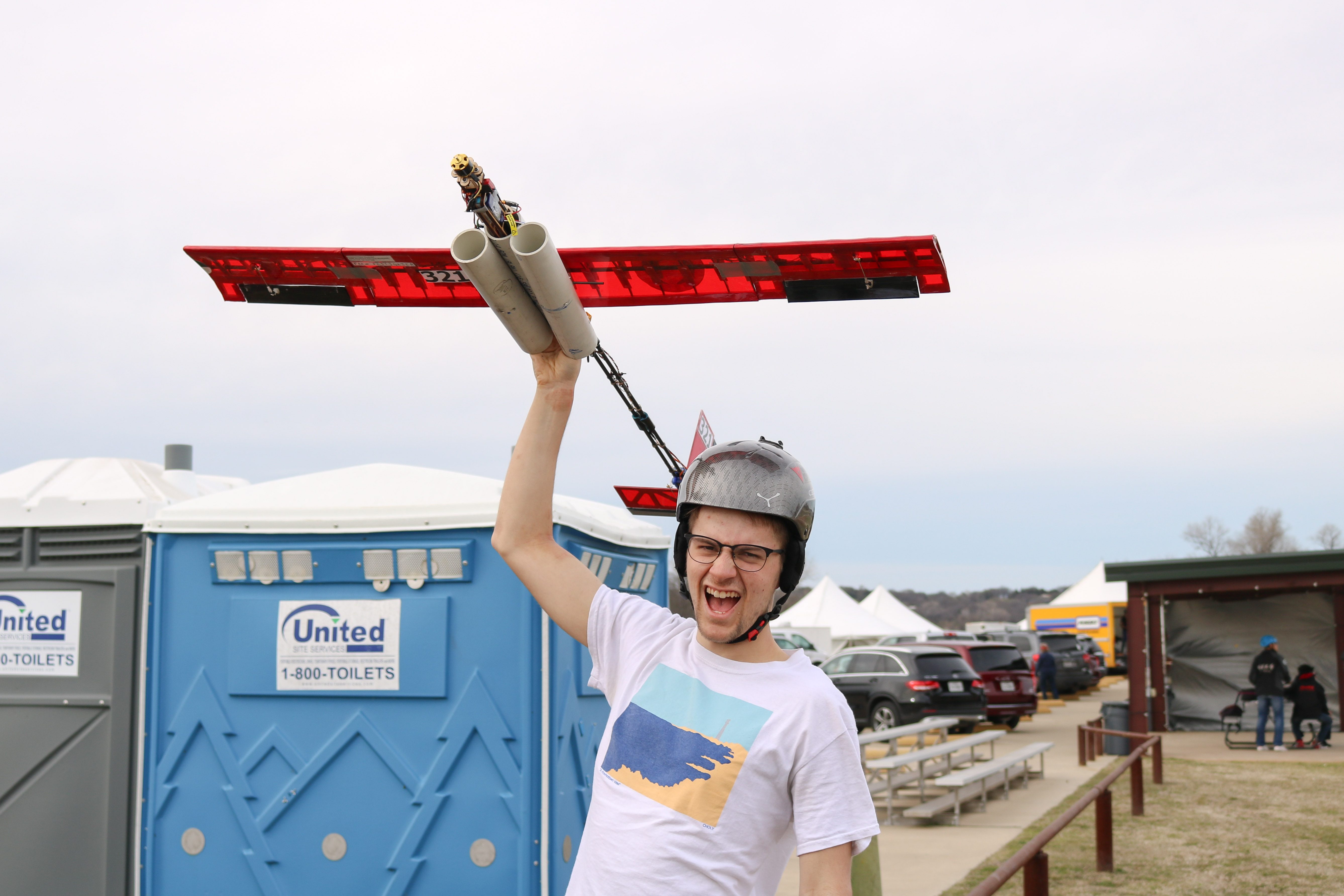
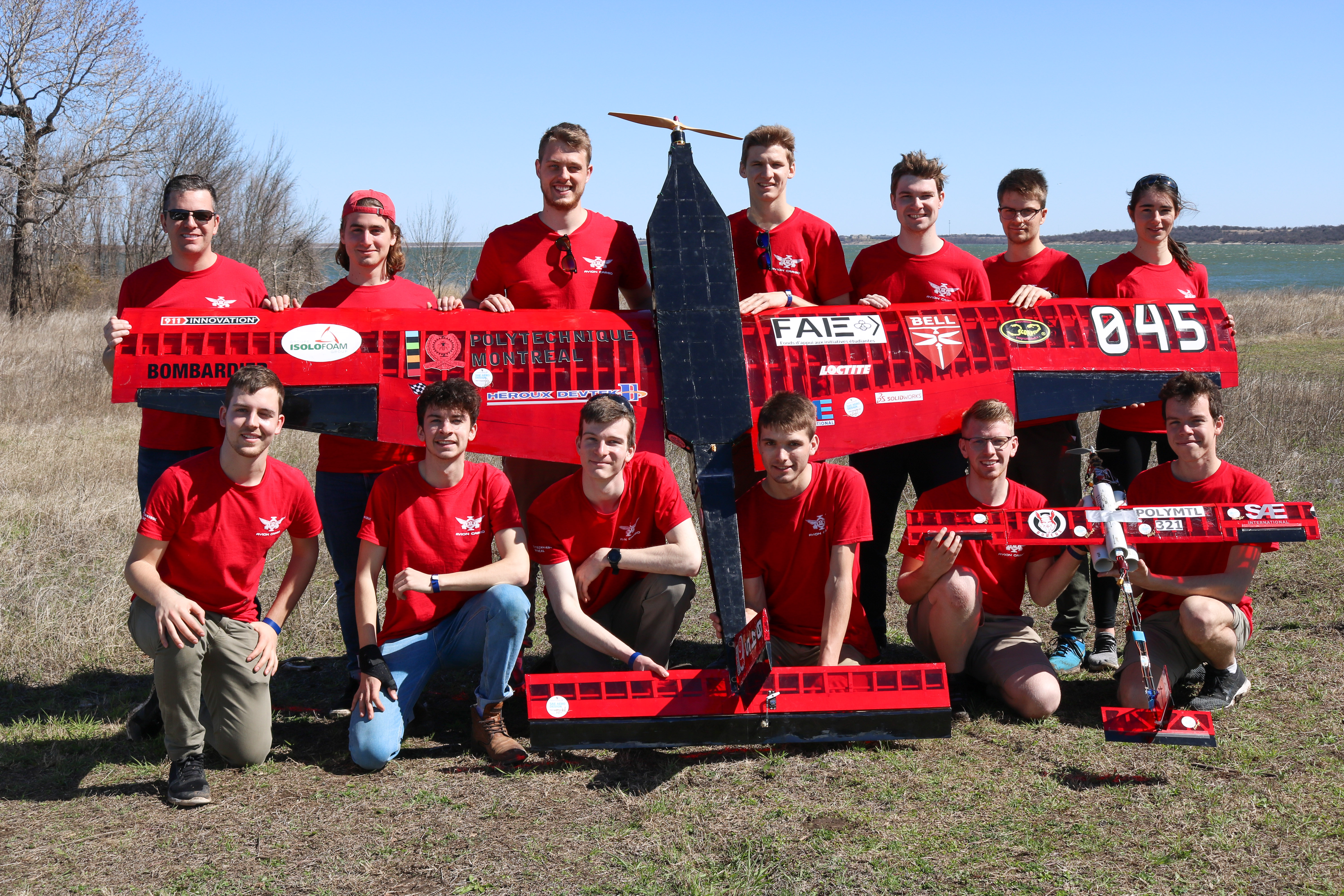
The 2017-2018 challenge was the first of its three year cycle and brought in a new set of rules for the micro class. The key design components of the small airplane are to be disassembled and stored in a shoebox as well as to be quickly re-assembled. An added level of difficulty was the payload of the aircraft: PVC tubes with 2” diameters. These plastic tubes had to be stored with the aircraft in the shoebox.
The team, made up entirely of first year aerospace engineering students, concentrated their efforts on creating a robust airplane, capable of flying in the maximum number of flight rounds. The wings were disassembled into three parts, while the empennage was disconnected from the fuselage for an efficient arrangement in the box. The arbitrary goal was set and achieved to carry a payload of 2 tubes of PVC.
During the competition, in Lakeland, FL, S-Cargo stood out for its stability in flight and its capacity to face gusts of wind without breaking. The team, led by Frédéric Larocque, finished 11th place overall.
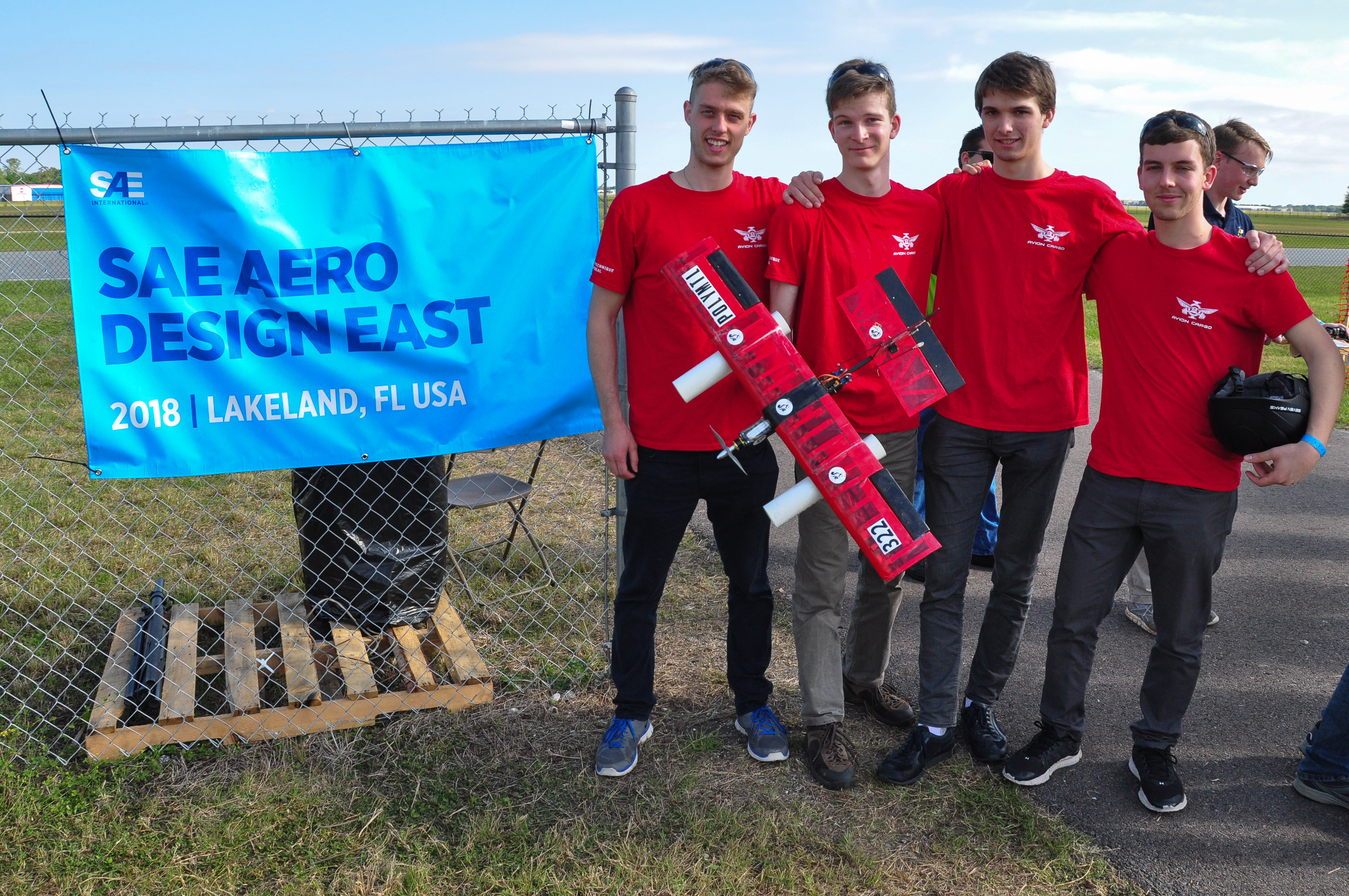
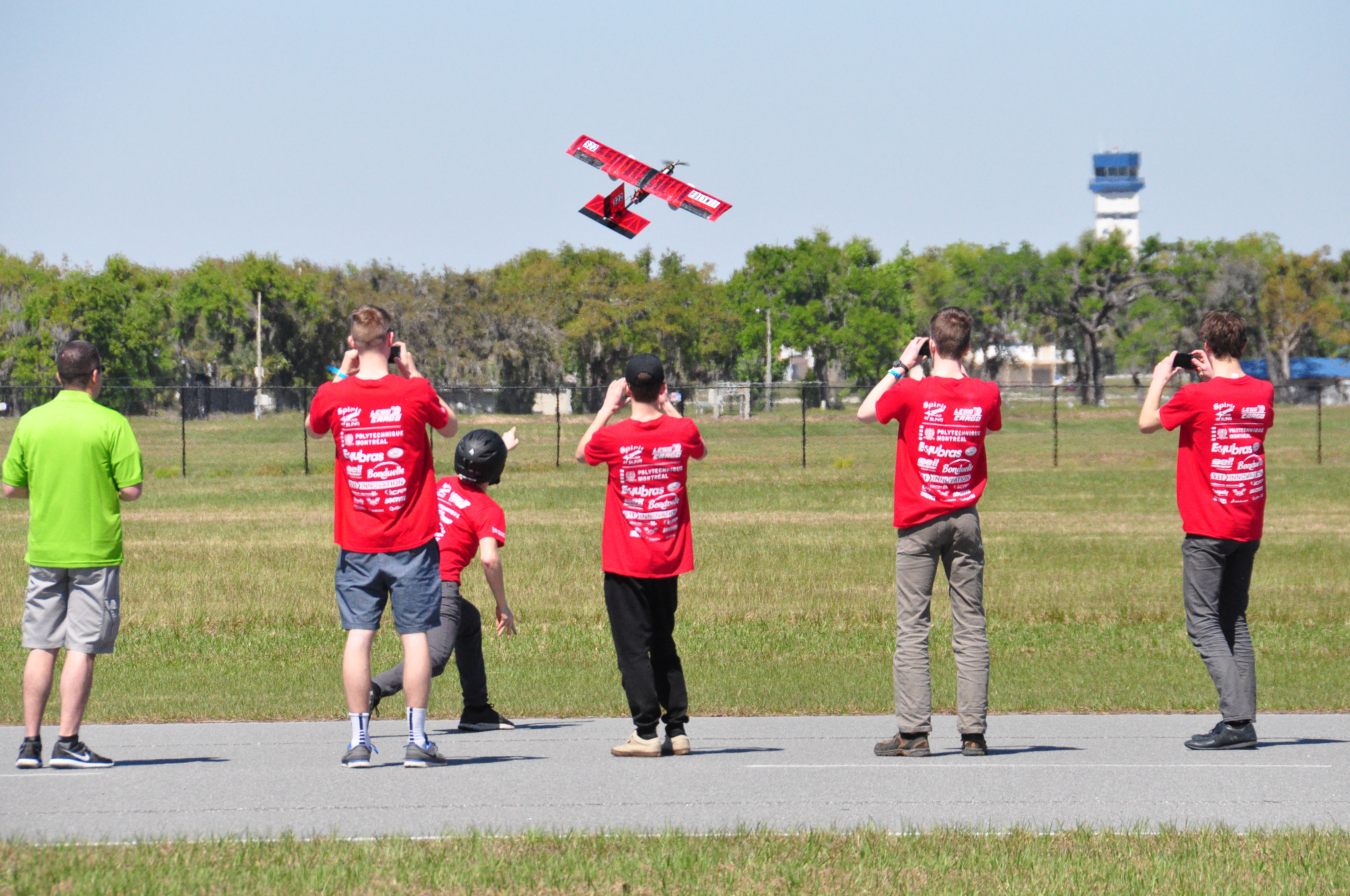
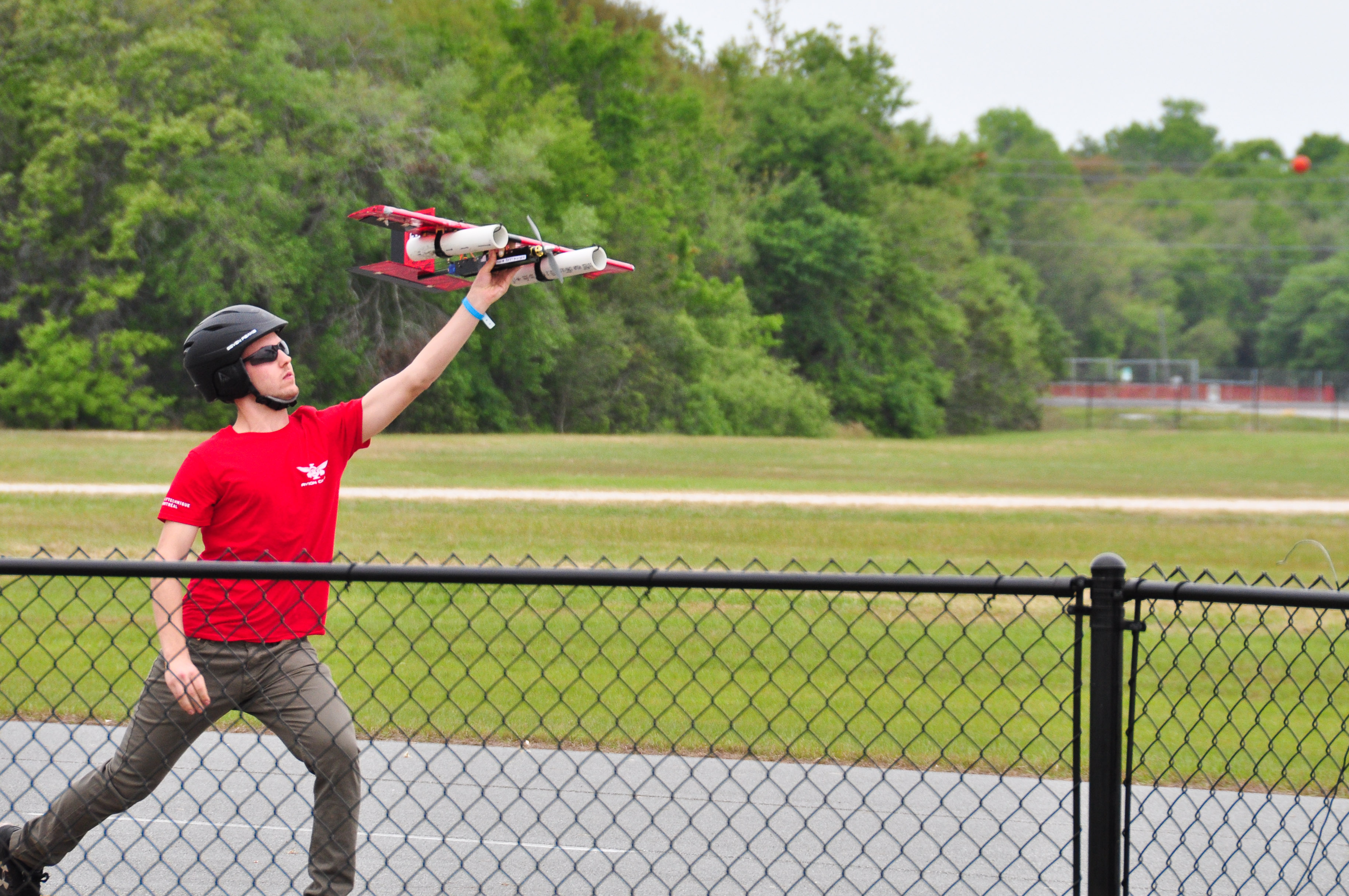
The 2017 micro class challenge was multifaceted and entailed several design constraints. Not only did the aircraft have to be disassembled and stored with its payload in a container of limited diameter, the cargo bay had a minimum size imposed and the payload must weigh less than 10 pounds. Polycan was a monoplane high-wing with an empty weight of 1.35 pounds and had a maximum payload of 3.16 pounds. The team, led by Dominic Dufour, finished 14th in design, 9th in technical presentation, 2nd for most payload liften, 8th for payload ratio and 12th overall.
The micro class challenge for 2013 was to fit the aircraft and its payload in a container of a certain size, with each component having its own place in the foam lining of the container. As well, the weight of the aircraft must be less than two pounds. The Harfang was a monoplane high-wing that weighed in at 1.04 pounds. The team, led by Gabriel Bedi Ebanda, undertook the challenge with a maximum payload of 2.74 pounds.
Avion Cargo’s first year in the micro class, Fascination was a strong competitor that put Polytechnique on the map in this category. With the challenges of fitting into a box with limited dimensions, to meet the minimum size requirement of the cargo bay and to be assembled in less than three minutes, the team had plenty of work ahead of them to establish Avion Cargo’s presence in the micro class. Fascination was a monoplane with a high wing, an empty weight of 1.52 pounds and a maximum payload of 6.8 pounds. The team finished 3rd in design and 7th overall.
